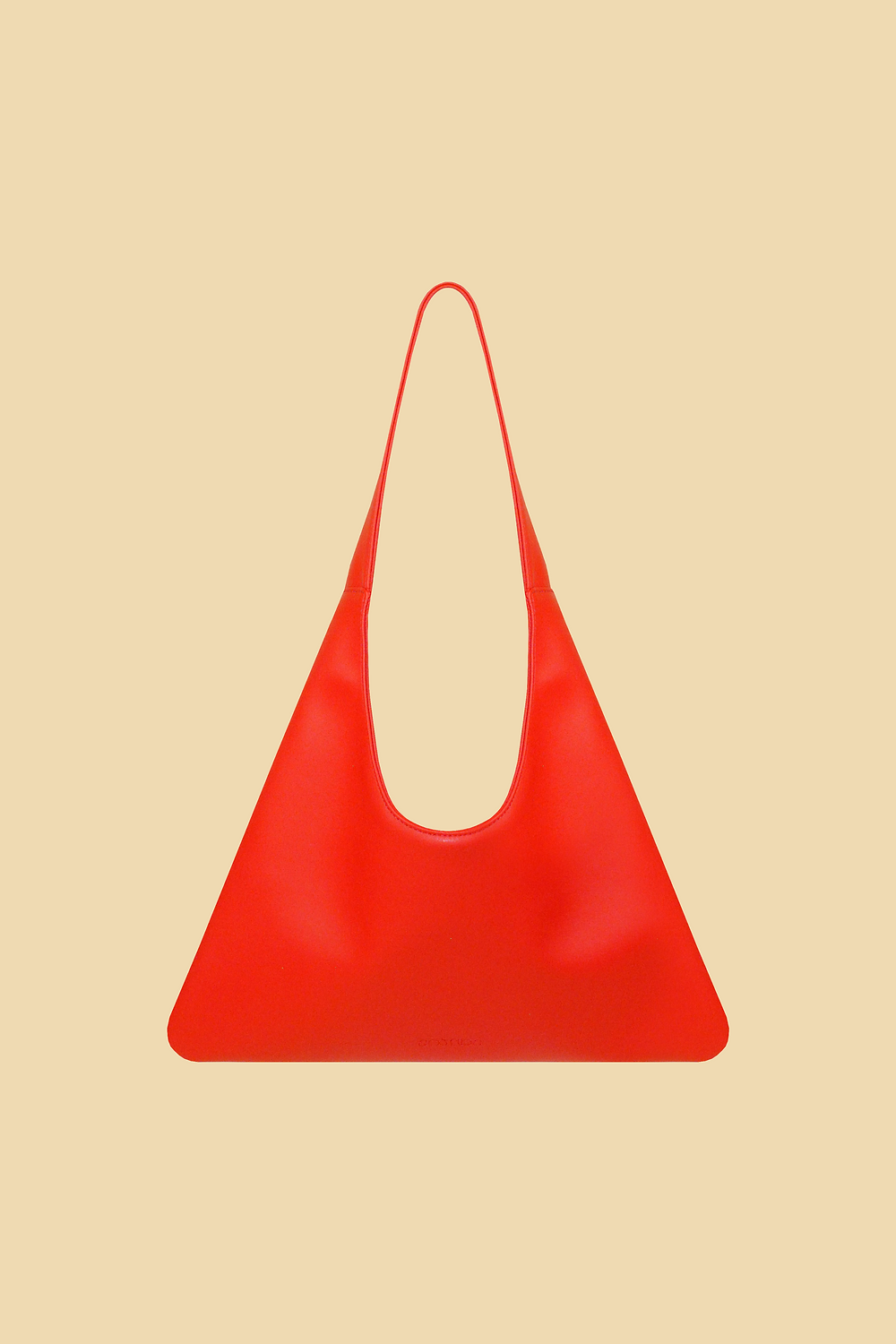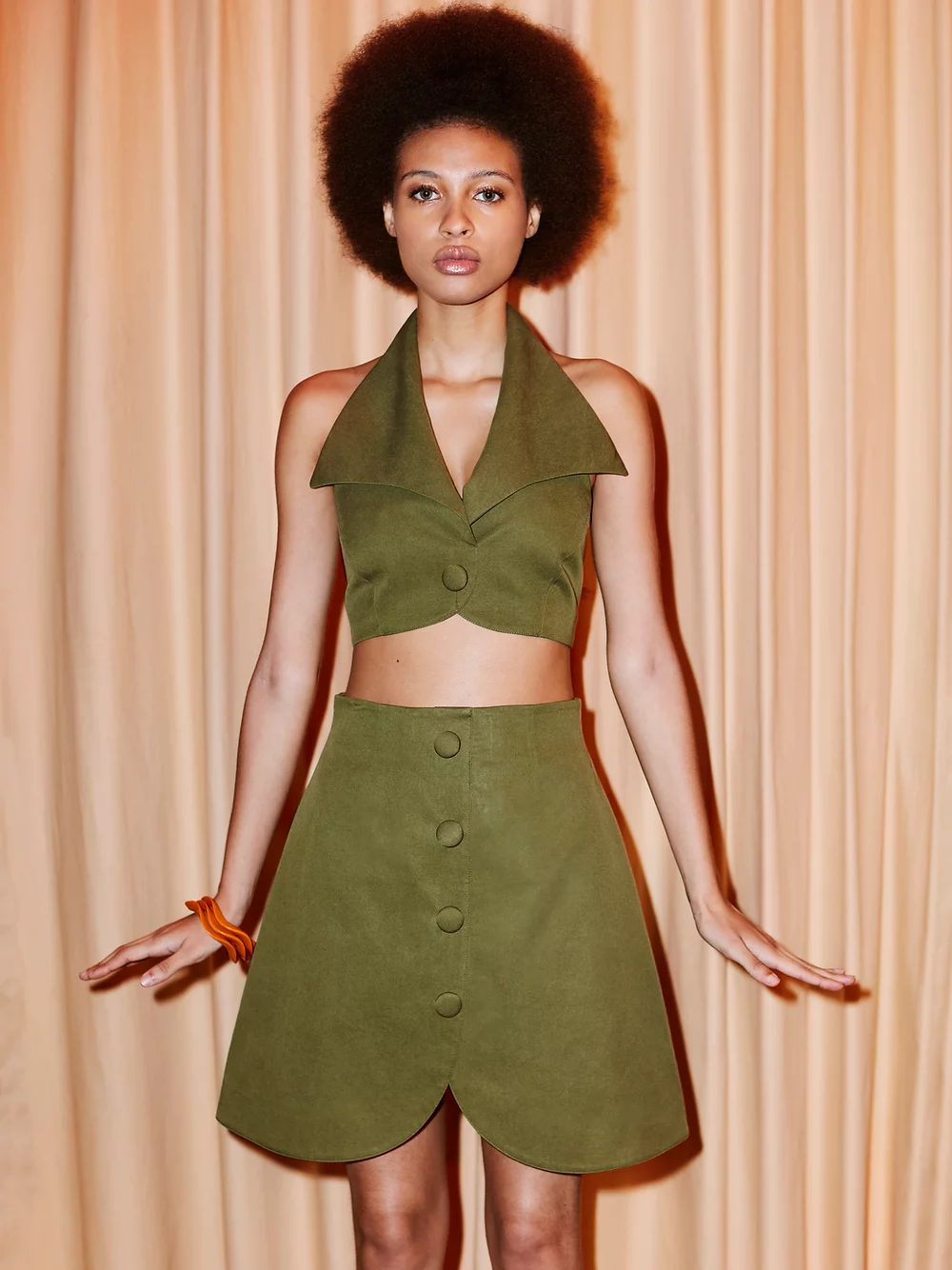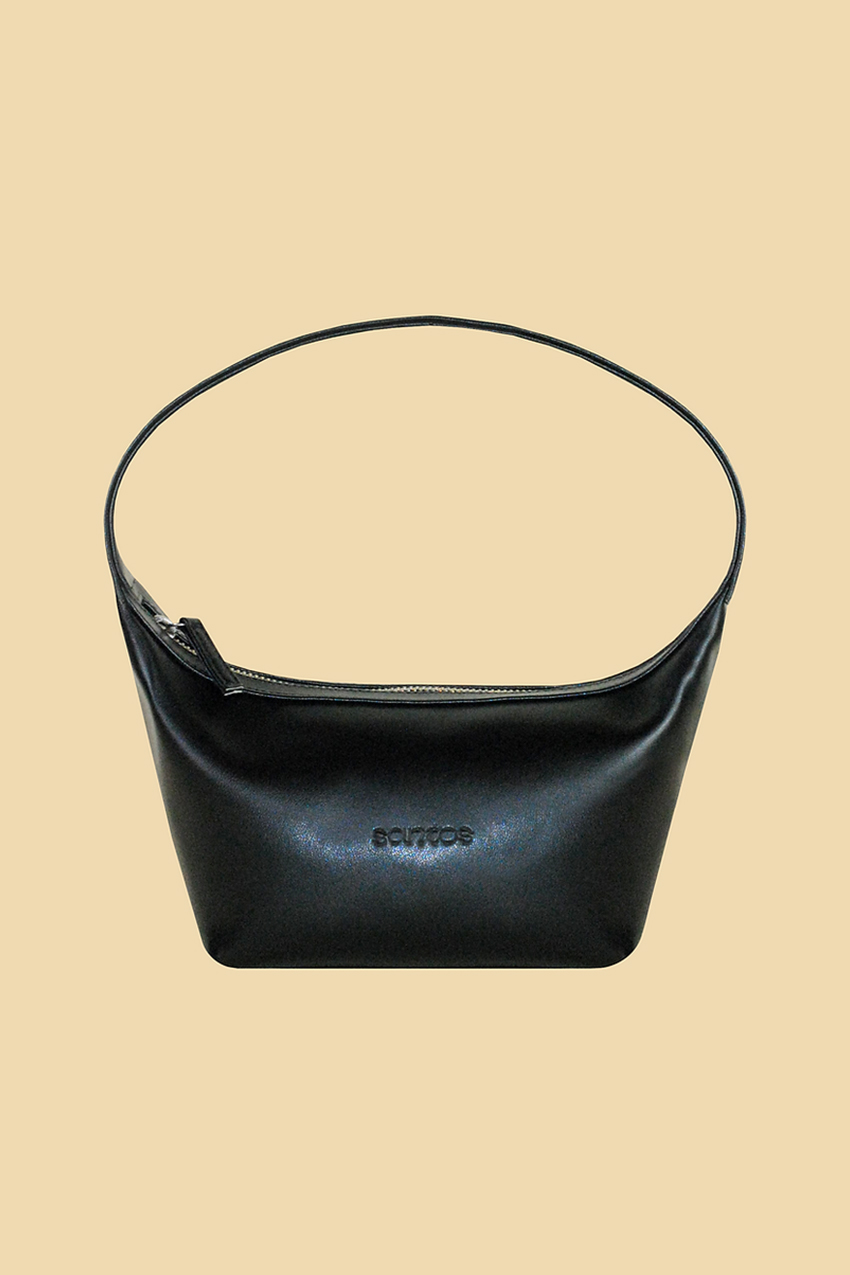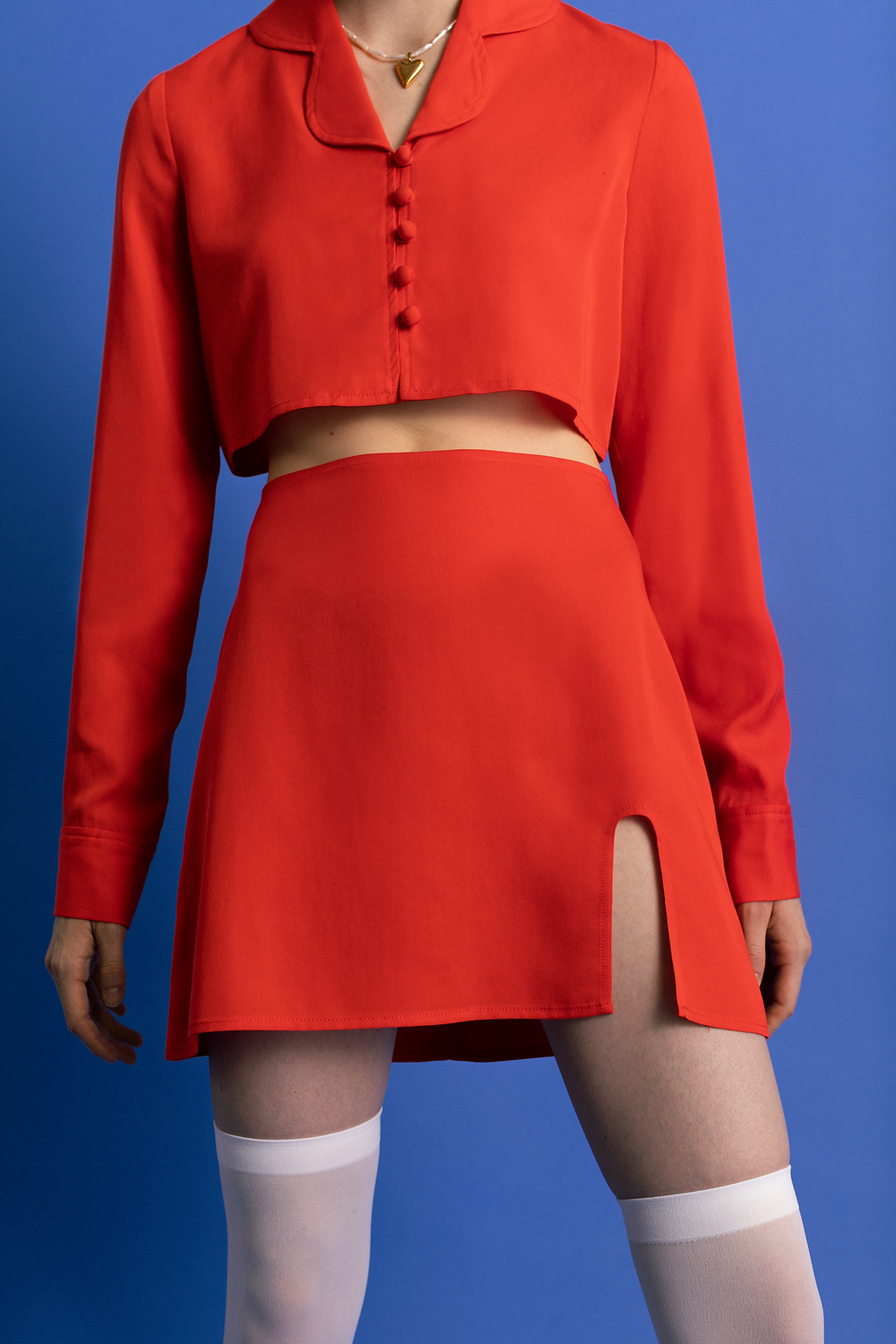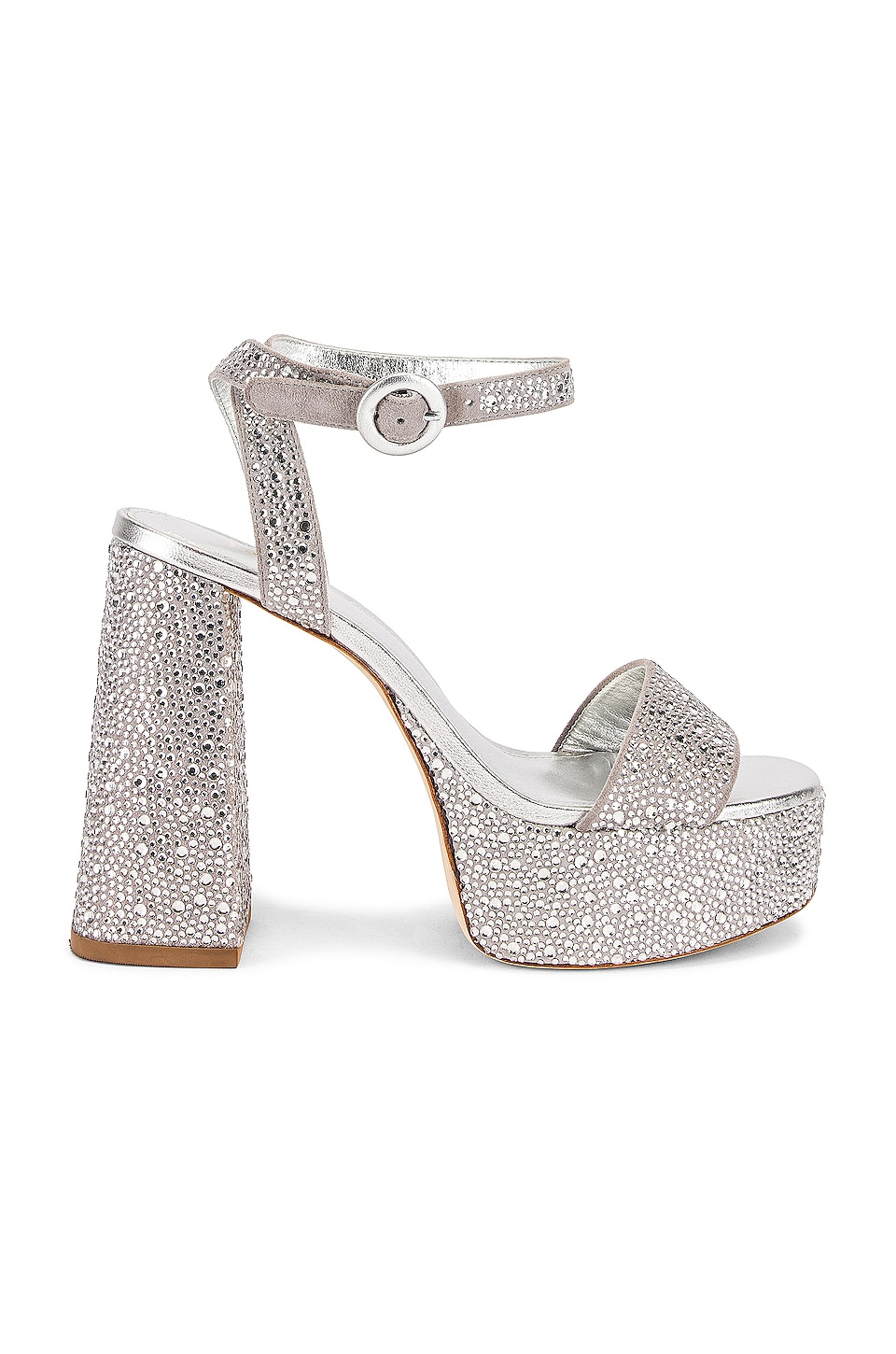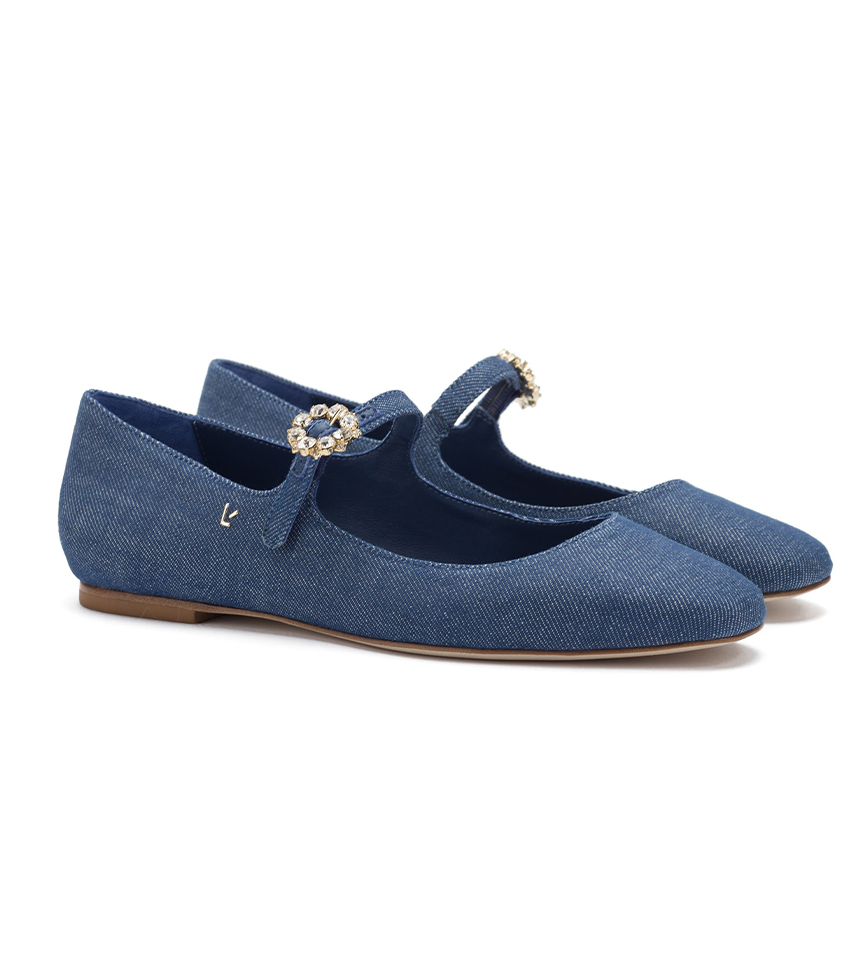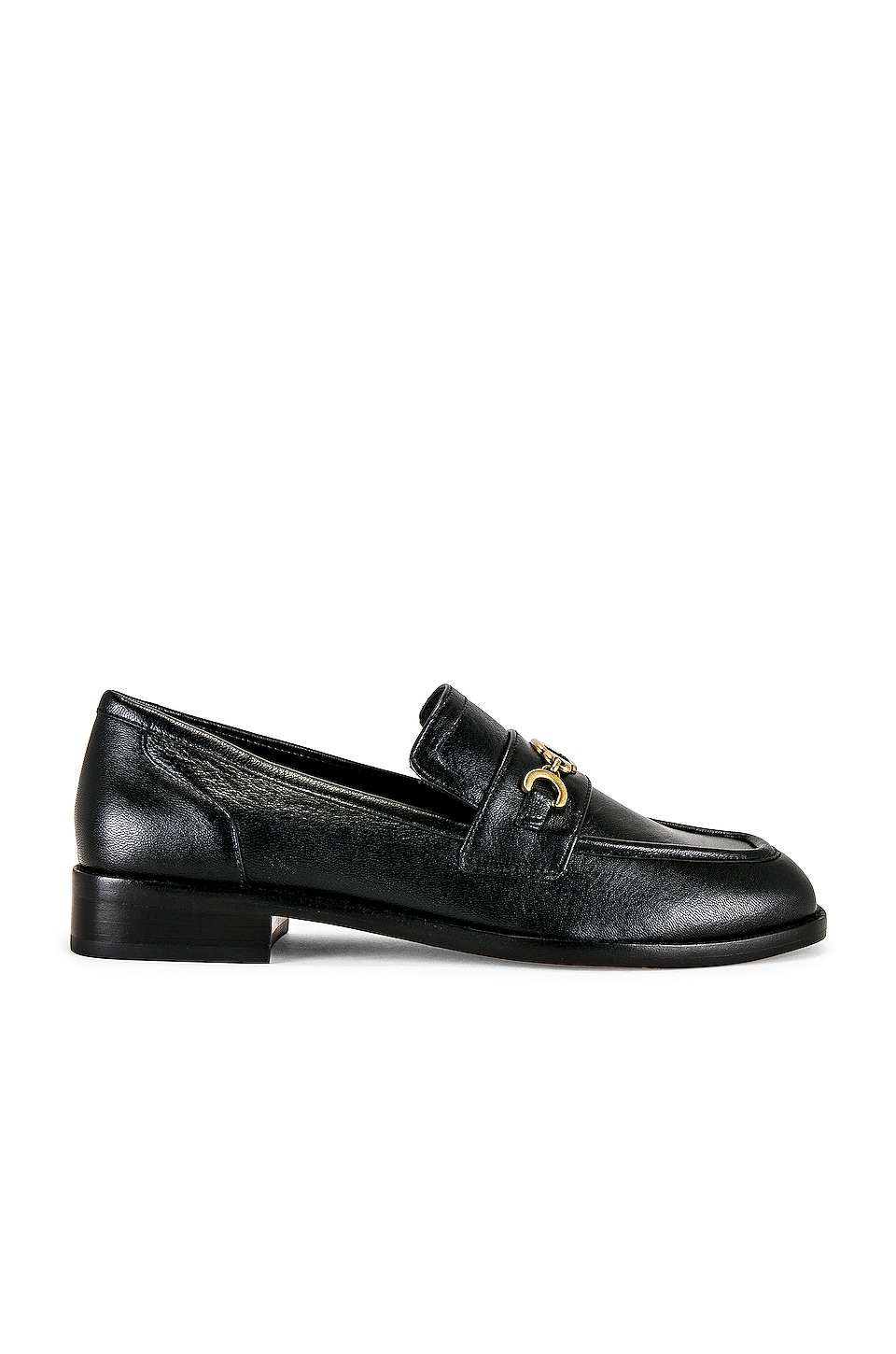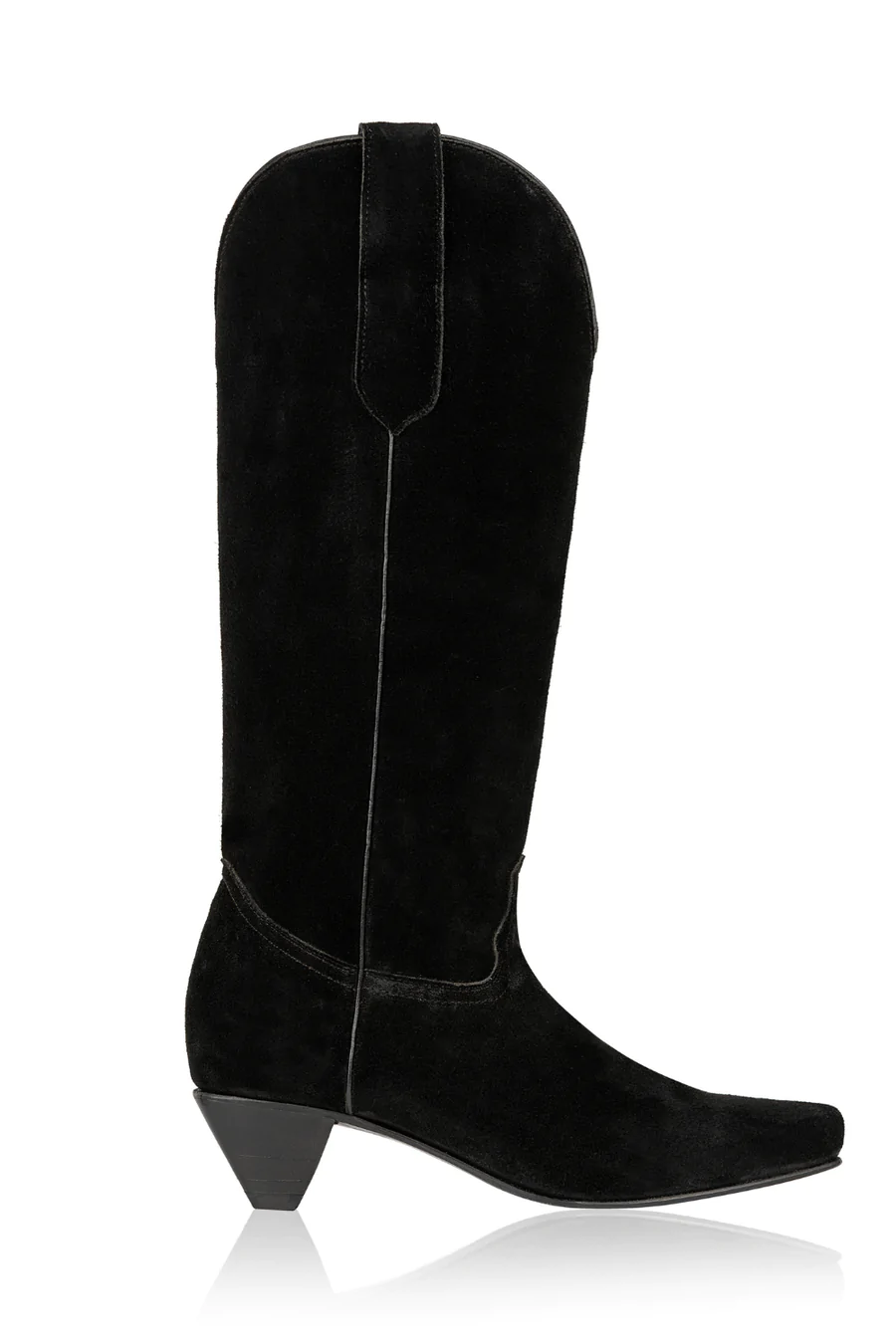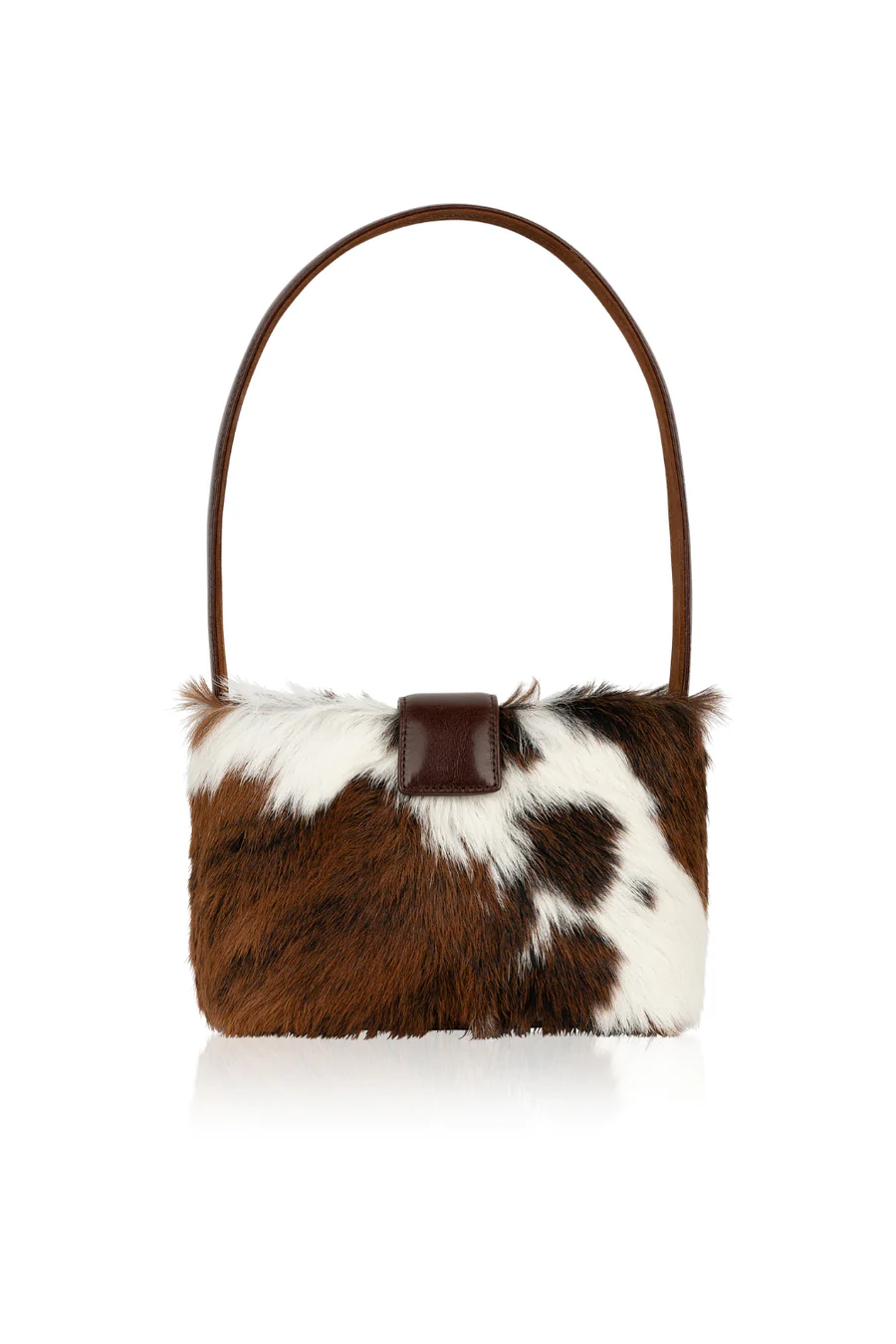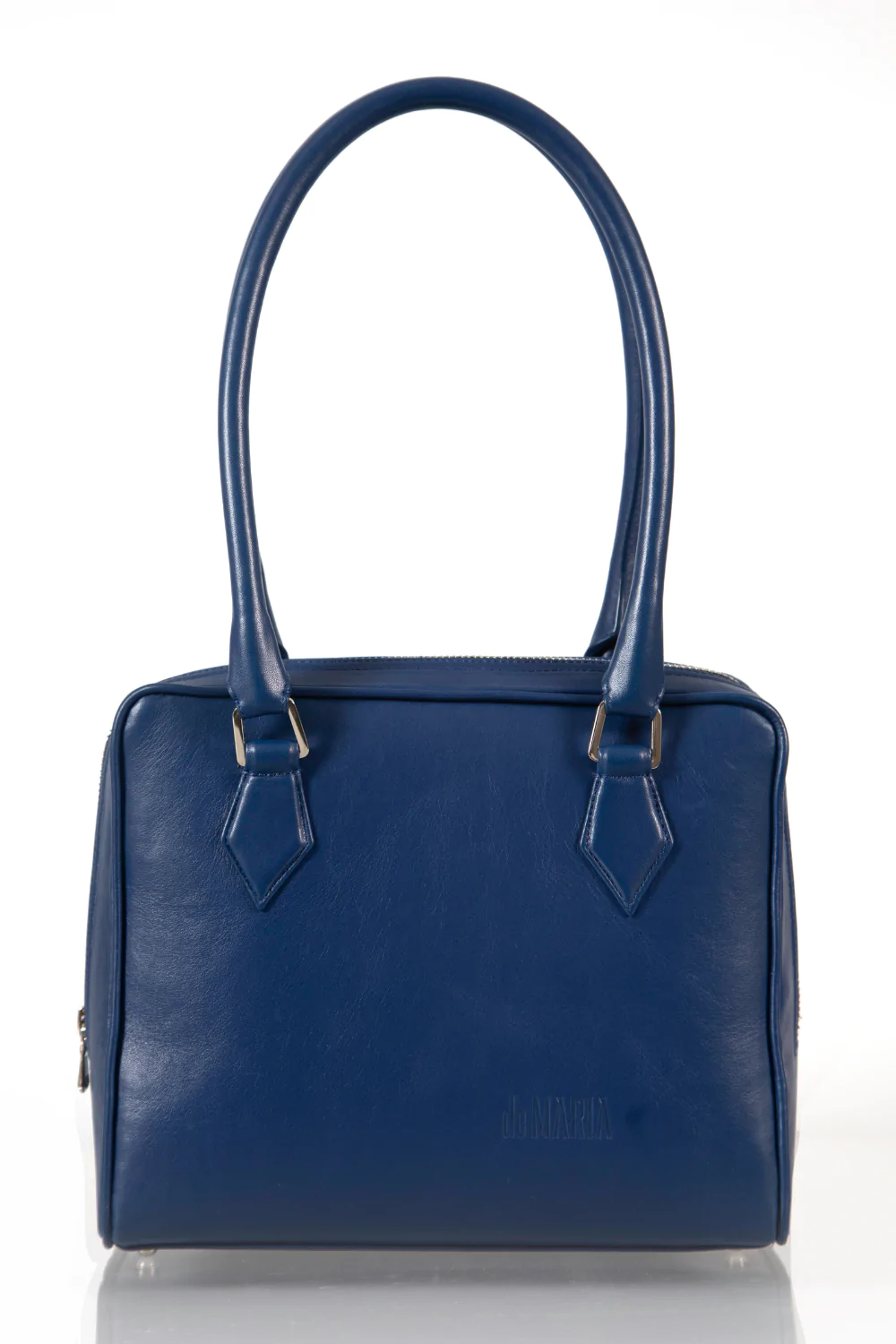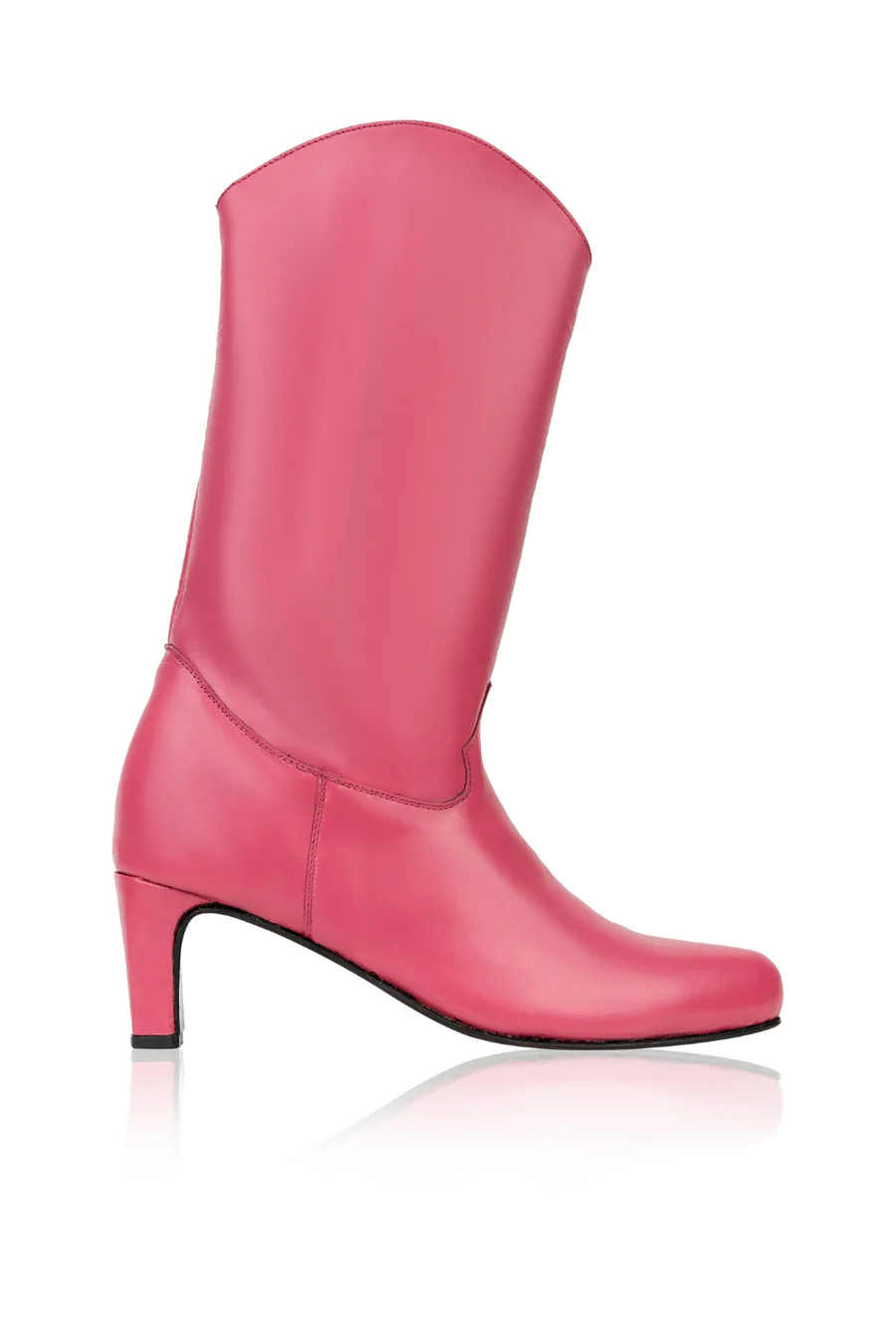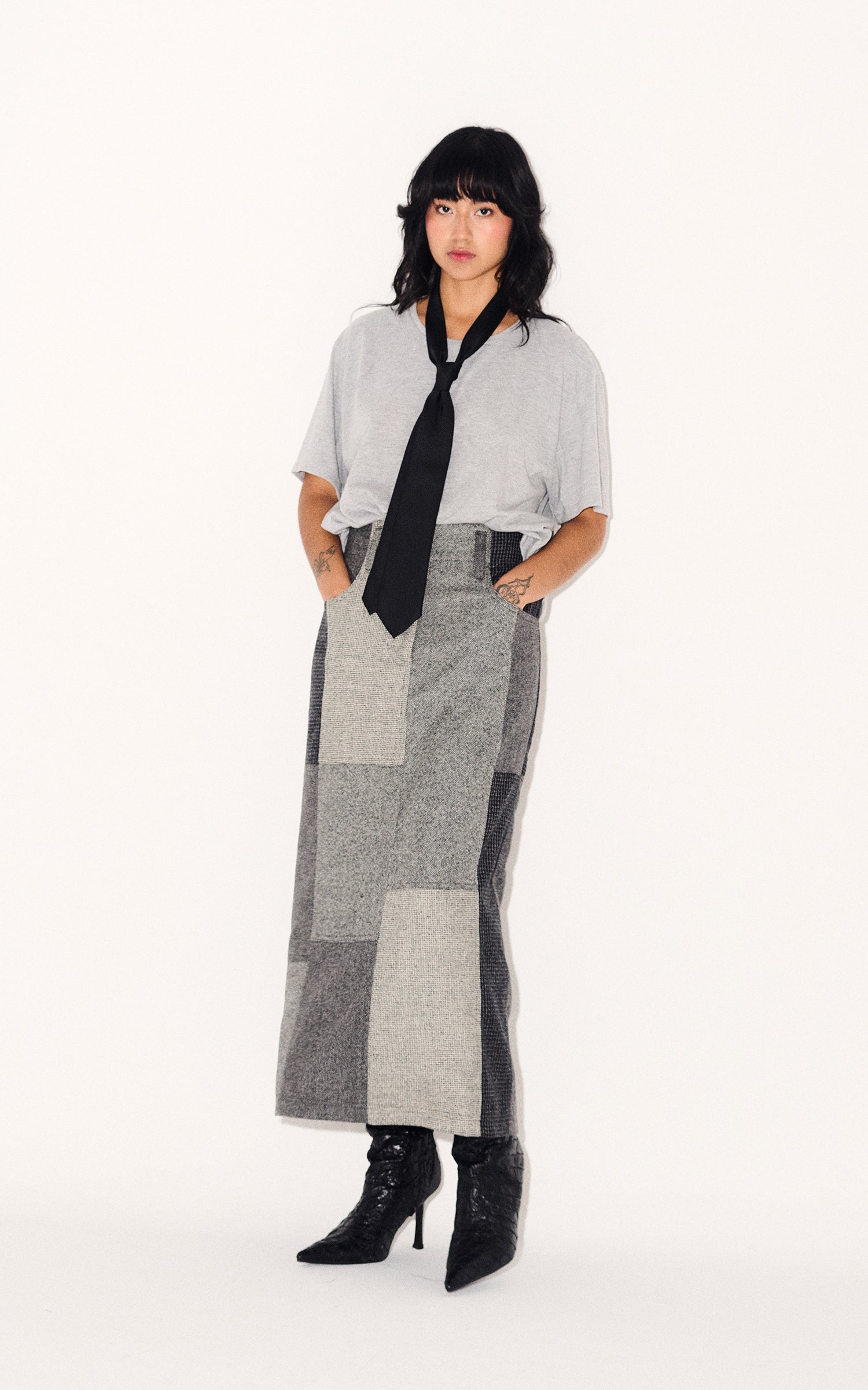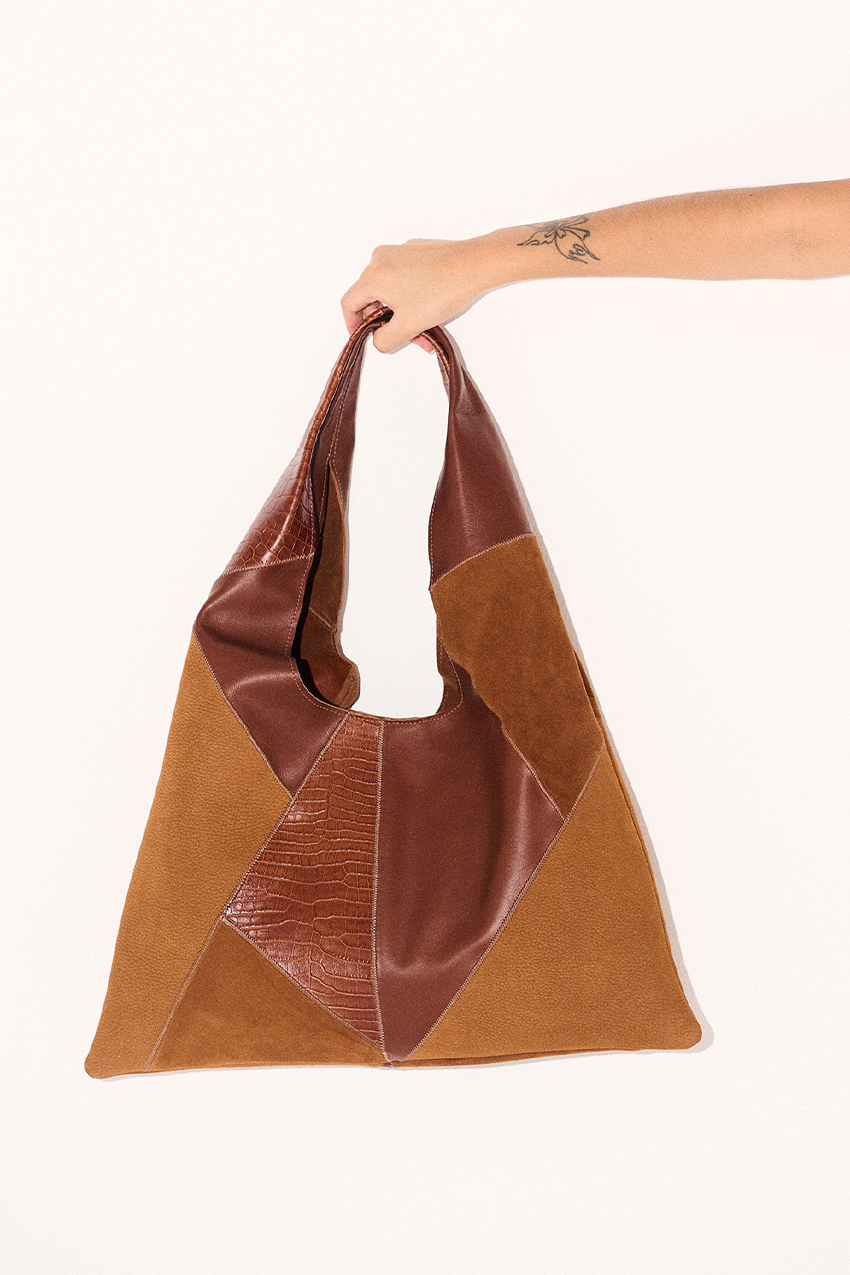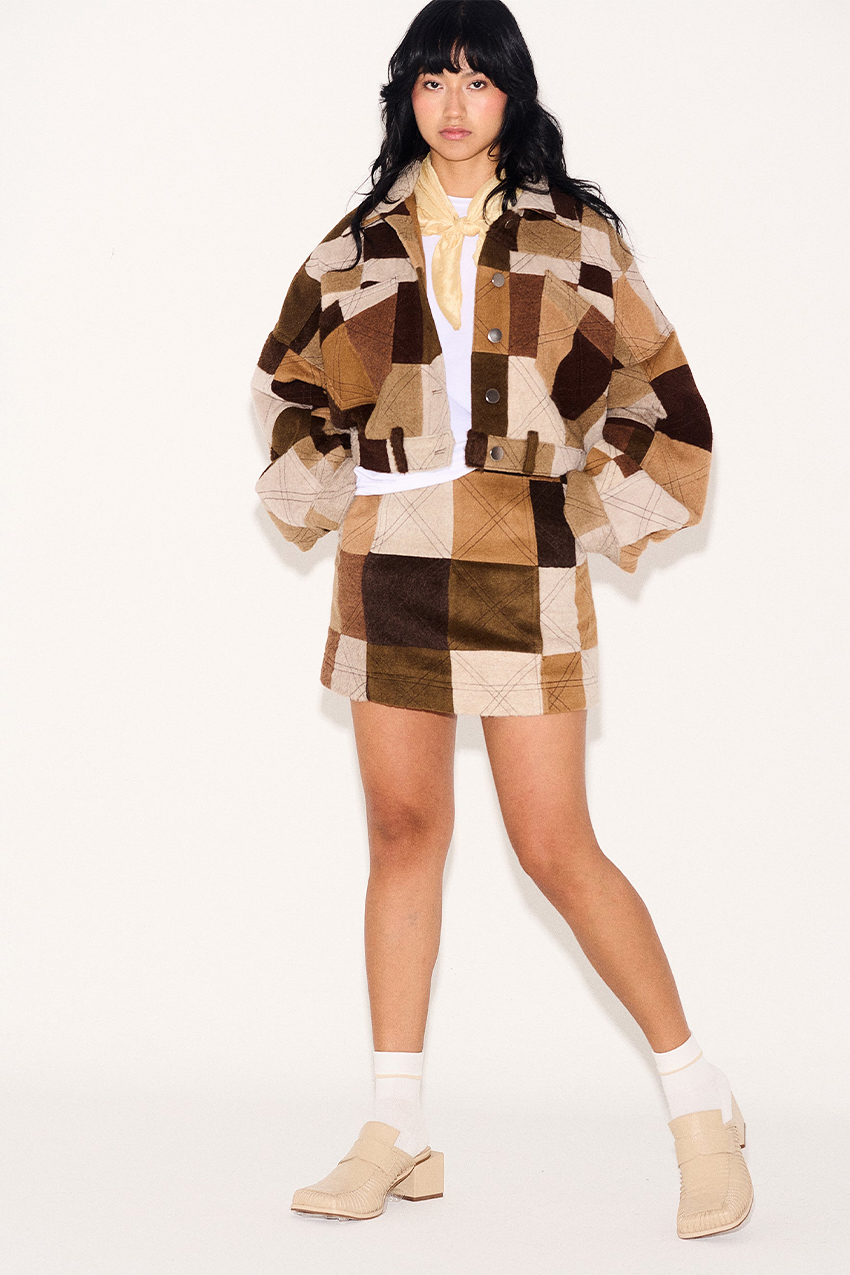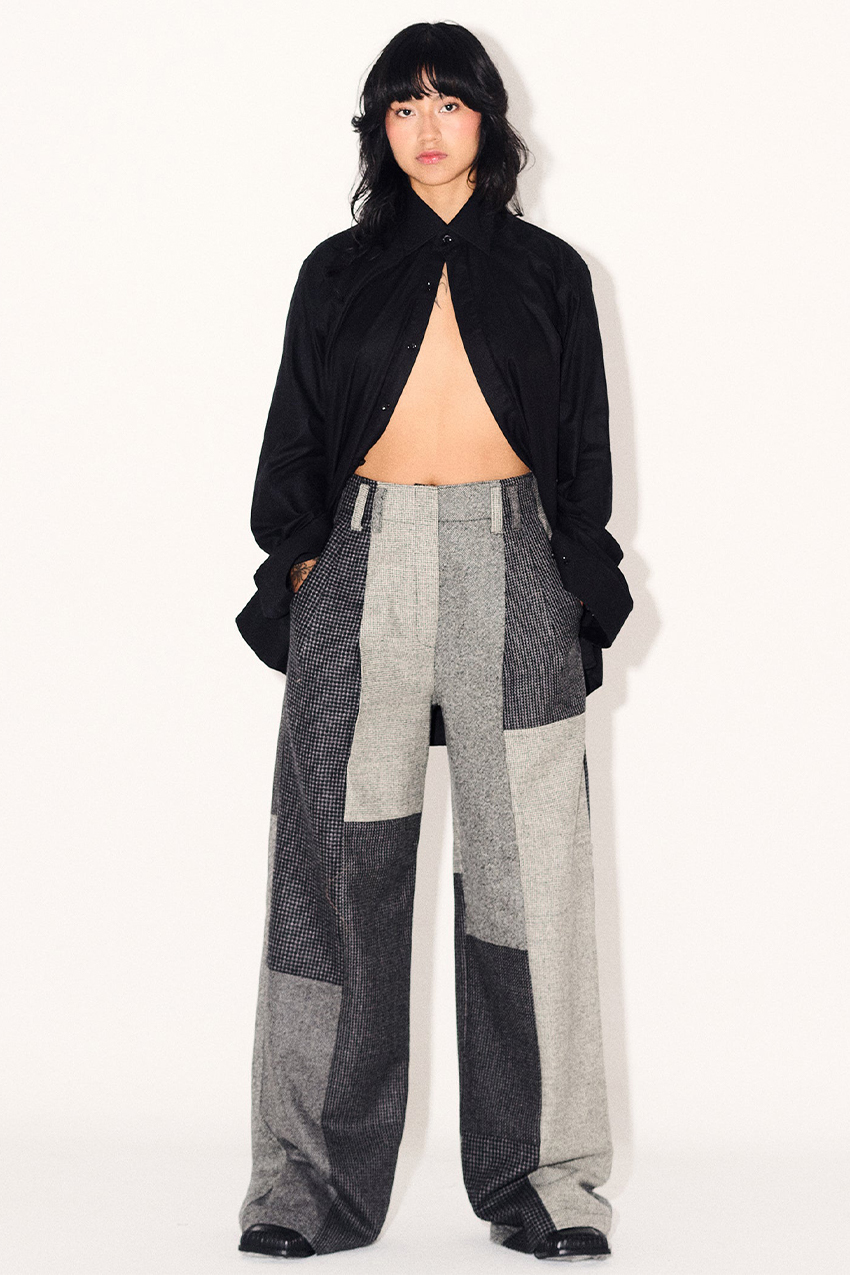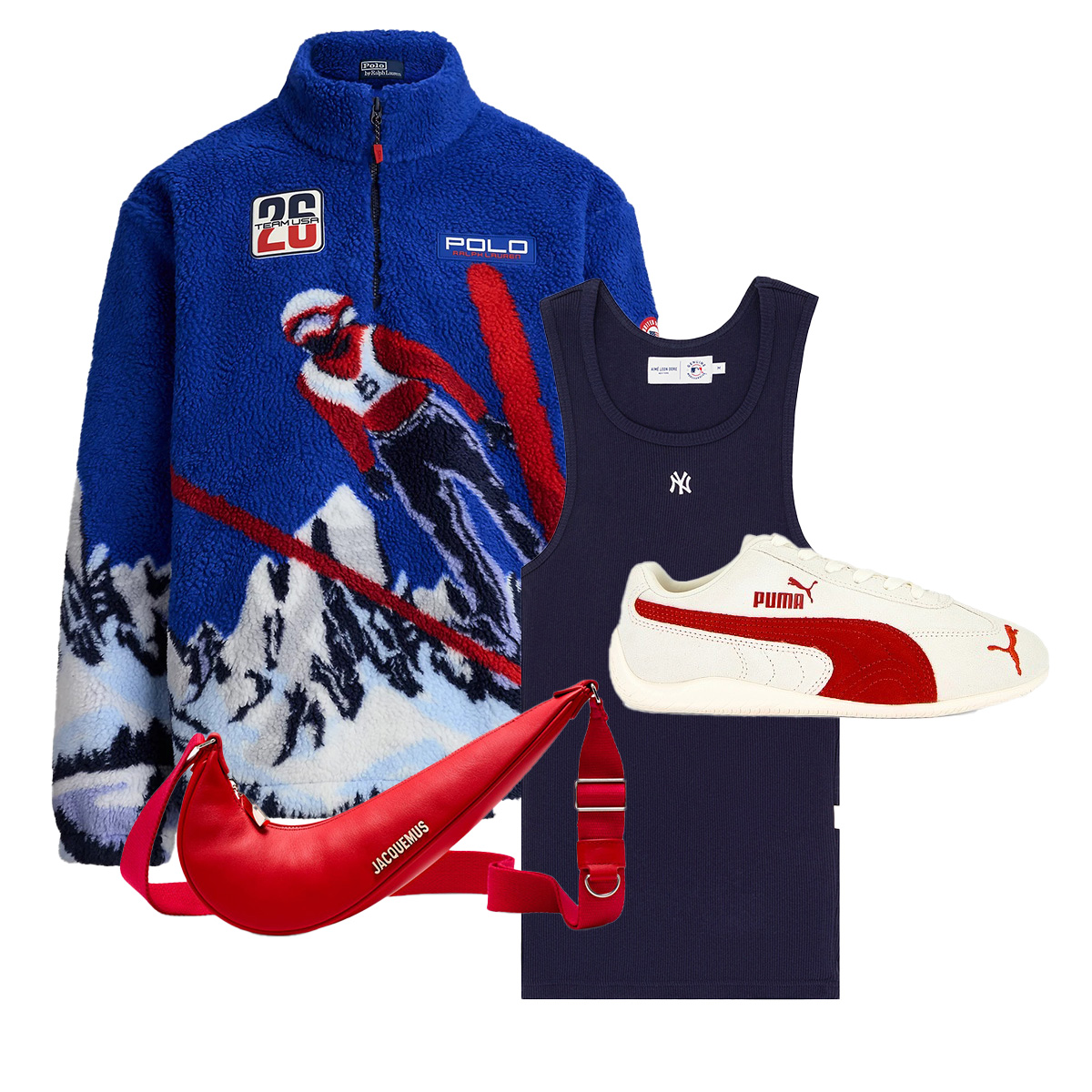How Fashion's Coolest Emerging Brands Are Celebrating Their Latin Roots
Editorial Note: This post was originally published at an earlier date. Since our support for Latinx-owned brands is a forever kind of thing, we thought we'd update any sold-out products to make it easy to shop Wholesale Replica Bag and greatest from some of our favorite designers.
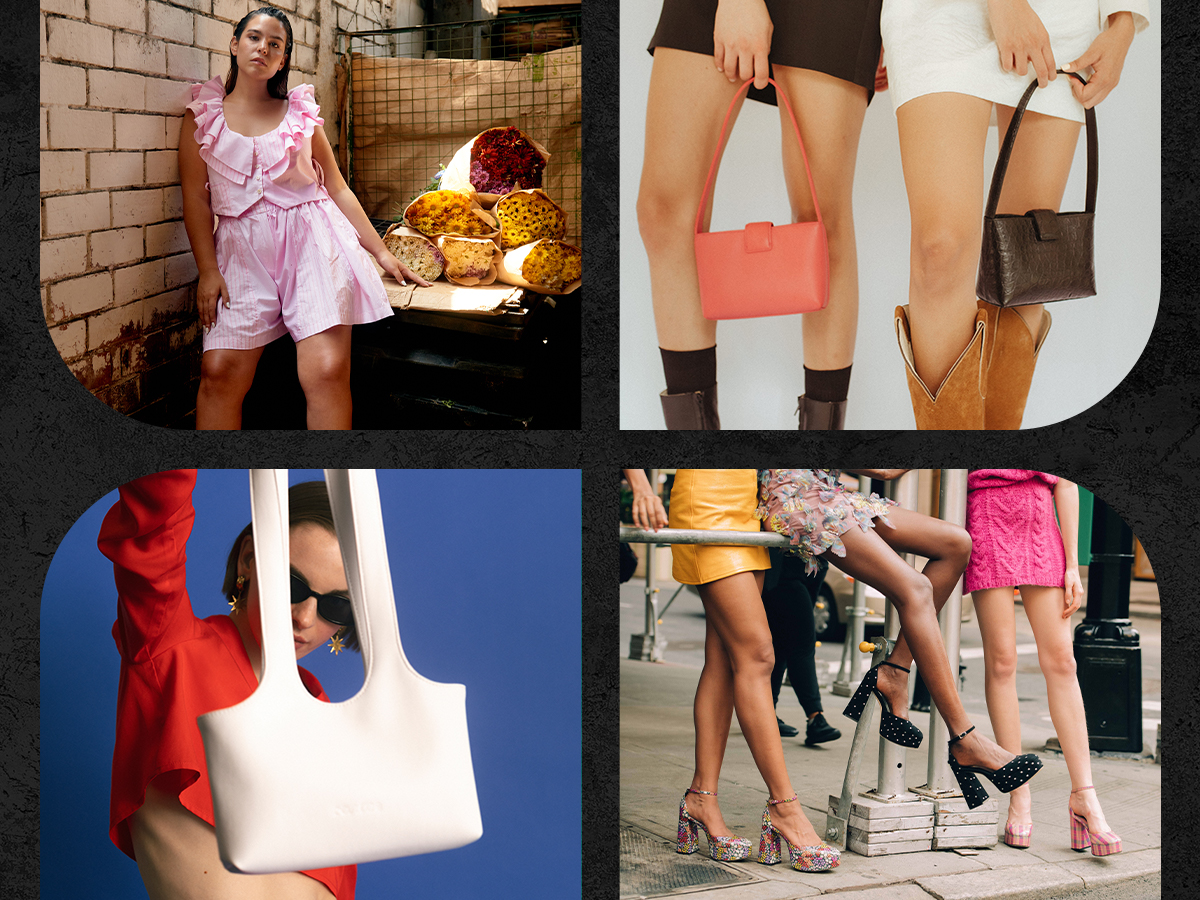
A large part of my job as a digital fashion editor involves being introduced to dozens of new brands all the time, but instead of simply rattling off a list of labels I think you should know about, I wanted to spark a deeper conversation with some of the coolest emerging Latin fashion designers right now: the creatives behind the brands Santos, Larroudé, de María, and Loti. Not only should we support them now and forever, but we should also listen to what they have to say, take diligent notes, and look to them as the new standards.
So, want to know what makes each of these labels so exciting? Whether it be a pioneering way to make leather from cactus, an elevated take on upcycled clothing, or Brazil-made It shoes, I suggest you start with these four brands.

Santos, a small NYC-based brand, is setting a new precedent for sustainably made wares. Designed with a '60s mod aesthetic and punchy primary color palette, the clothes are made from a blend of eucalyptus lyocell—a fabric that leaves a minimal environmental trace. Its bags are made in Mexico from a vegan leather that's crafted from cactus fibers. It doesn't get much more responsible (or cool) than that.
Why is your Latin background important to you? What is your favorite part about this community?
My Latina background represents everything. Part of my mission with the brand is to celebrate my Puerto Rican heritage by collaborating with local or Latinx talent, which is my favorite part of belonging to this community. All of our items are made locally in NYC by artisans from Puerto Rico, Peru, and Mexico, and our lookbooks have all been shot by Puerto Rican, Chilean, and Cuban photographers. Whenever I can, I try to shoot campaigns in different locations around the island, such as el Bosque Seco de Guanica, the mountains of Cayey, my grandmother's home, and most recently, the Sixto Escobar stadium, where I used to have my elementary school field days.
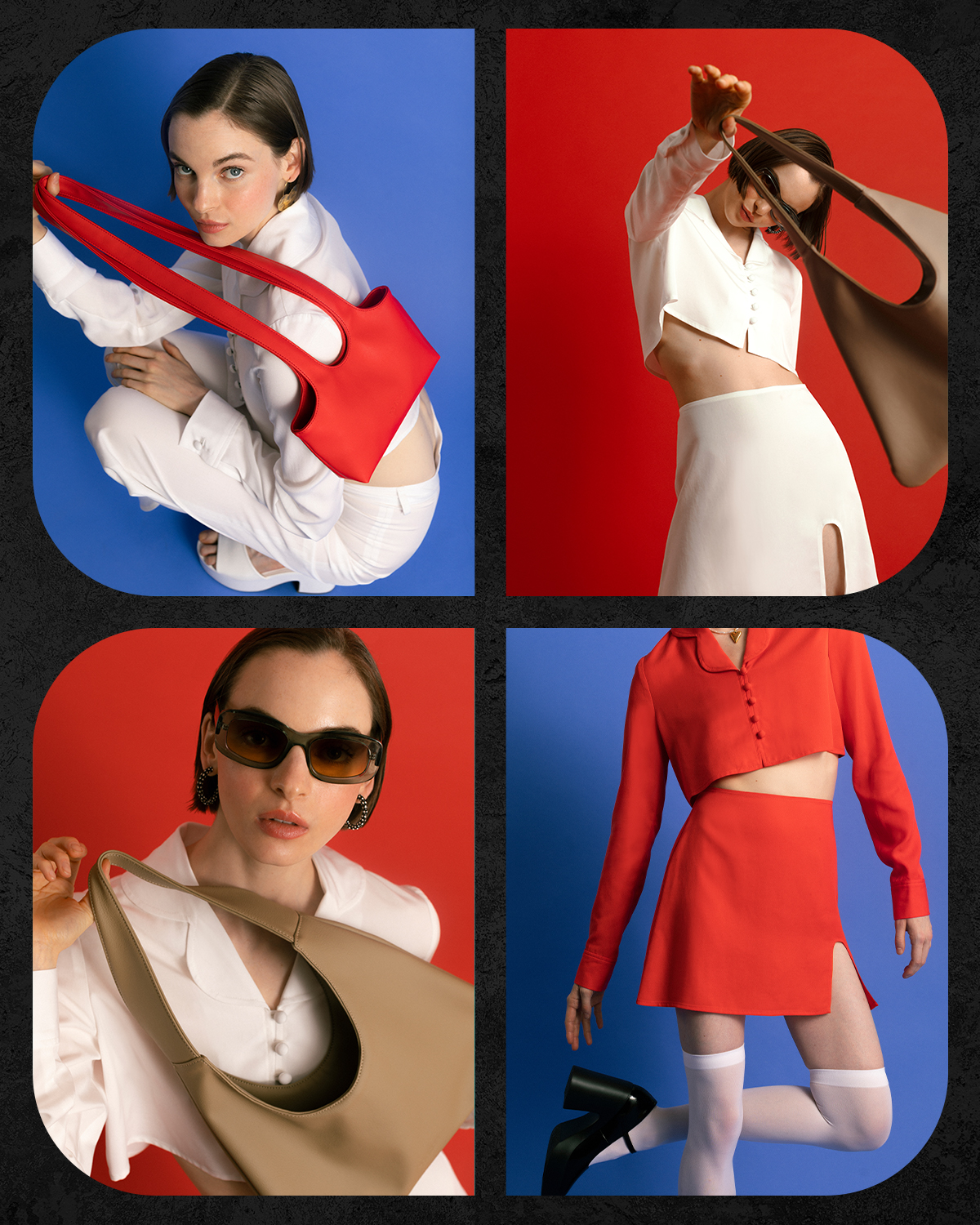
We're celebrating Hispanic Heritage Month, but it also comes at a time when we're seeing climate devastations in Puerto Rico and Mexico, creating even more emphasis on support for the Latin world. Given everything, is there any message you want to share with our readers about how we can show support in this moment and moving forward?
I always recommend researching first and donating to groups and organizations that are non-government-related and have pledged to use their funds to help affected communities. Some great organizations that have committed to supporting hurricane relief in Puerto Rico are…
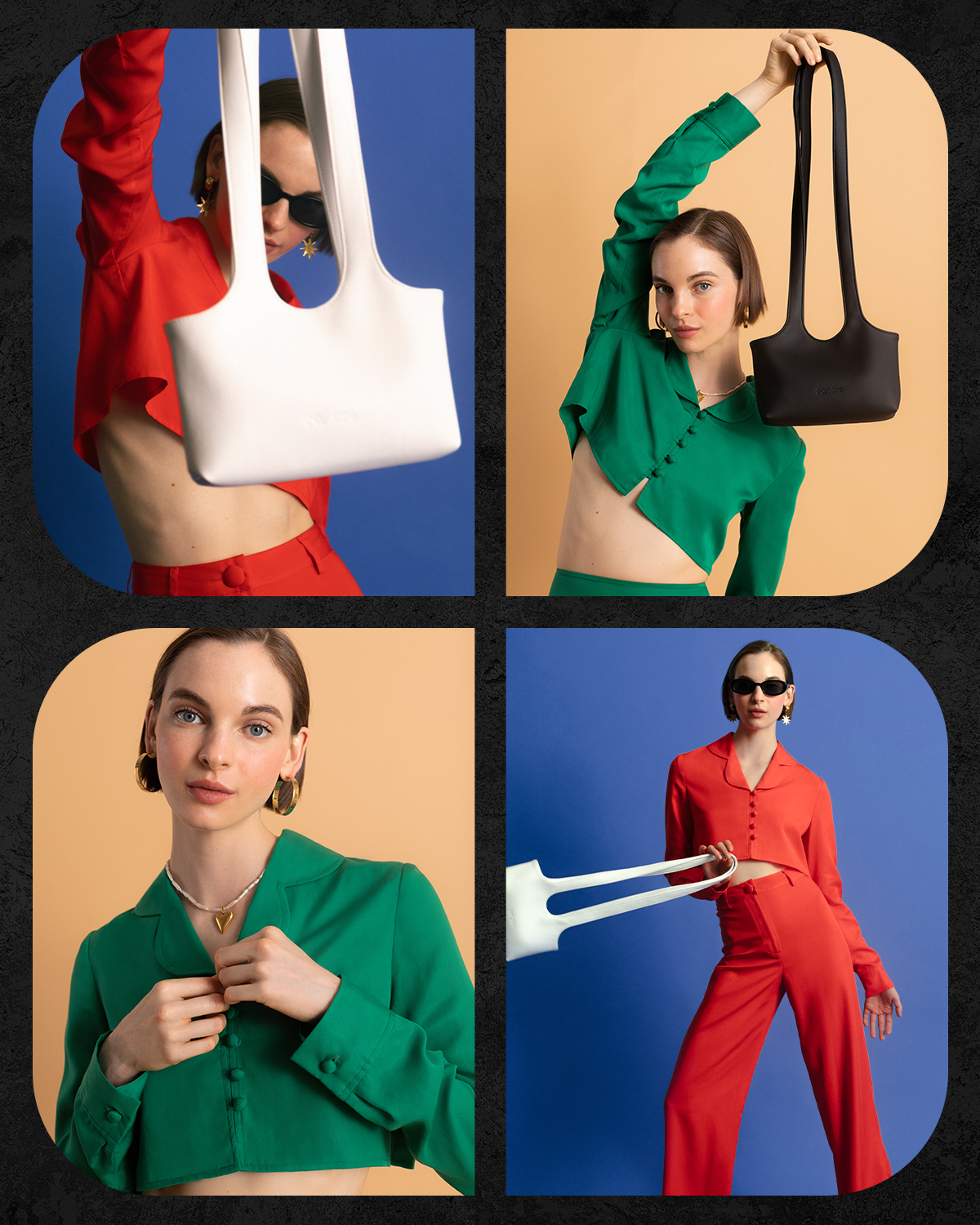
Your clothes and handbags are at the forefront of sustainable design. How did you get the idea to use cactus and eucalyptus fibers in your production? Why is sustainable production so important to you?
While living in San Francisco a few years ago, I came across mushroom leather, which sparked a huge interest in leather alternatives. It was too expensive for me at the time, but I luckily came across other options such as apple, grape, pineapple, and finally, cactus leather, which I love because, unlike most options, it doesn't use plastic to put all the components together.
Additionally, it has a similar look and feel to traditional leather, which is quite incredible. Our cactus leather is grown on a farm in Mexico solely on rainwater and uses 1/5 the amount of water to produce as traditional leather. It is also partially biodegradable (cactus part), and the remaining components (bio-based PU, not to be confused with conventional PU) are highly recyclable.
Do you have a favorite piece from your line right now? Anything that you're particularly excited about?
Yes! Our best-selling style Agave Triangular Tote in our limited-edition tomato-red colorway, which we're soon launching in a limited-edition electric blue as well.
Shop the brand:
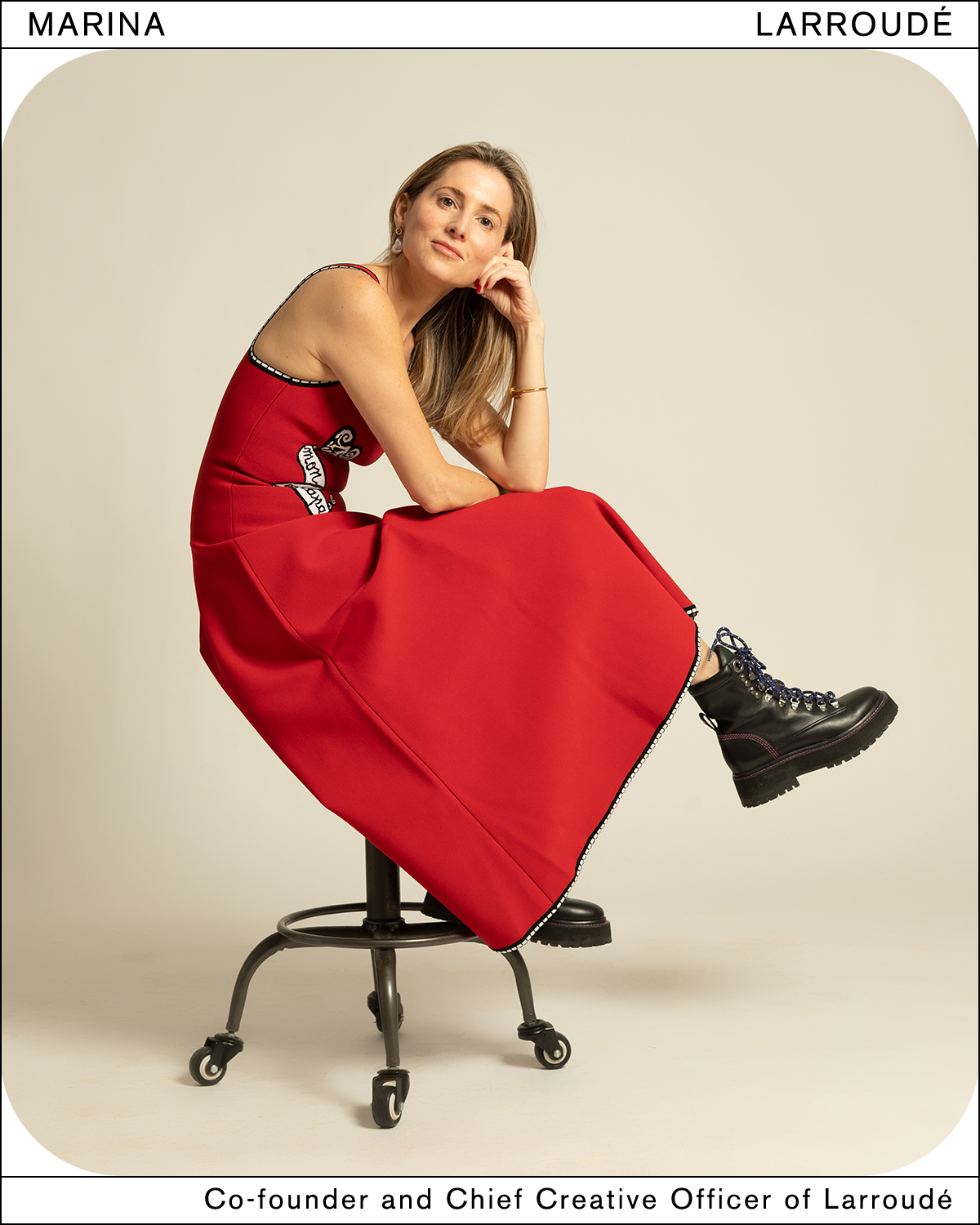
Before adding footwear designer to her résumé with the launch of her eponymous brand in 2020, Marina Larroudé cut her teeth in the industry for the last two decades, most recently as a Barney's Fashion Director, so you could say she knows a thing or two. Enter Larroudé, a line a joyful and on-trend shoes that have everything but the designer markup.
Your background in fashion is impressive to say the least. How does your experience as a VP at Barney's and editor at Condé Nast inform the brand?
I’m so grateful for the years I spent at Barneys and Condé Nast. All of my experiences have led me to creating Larroudé. In various roles, I learned countless facets of the industry that I apply to my business everyday, from merchandising, to customer support, market share, consumer behavior, press, marketing and more. Building Larroudé has truly been an intersection of all of my experiences to date.
What kind of influence does your Brazilian heritage have on your design perspective?
The whimsical, joyful, carefree spirit of our brand is rooted in our Brazilian heritage. We incorporate a little bit of fun through each of our designs at Larroudé.
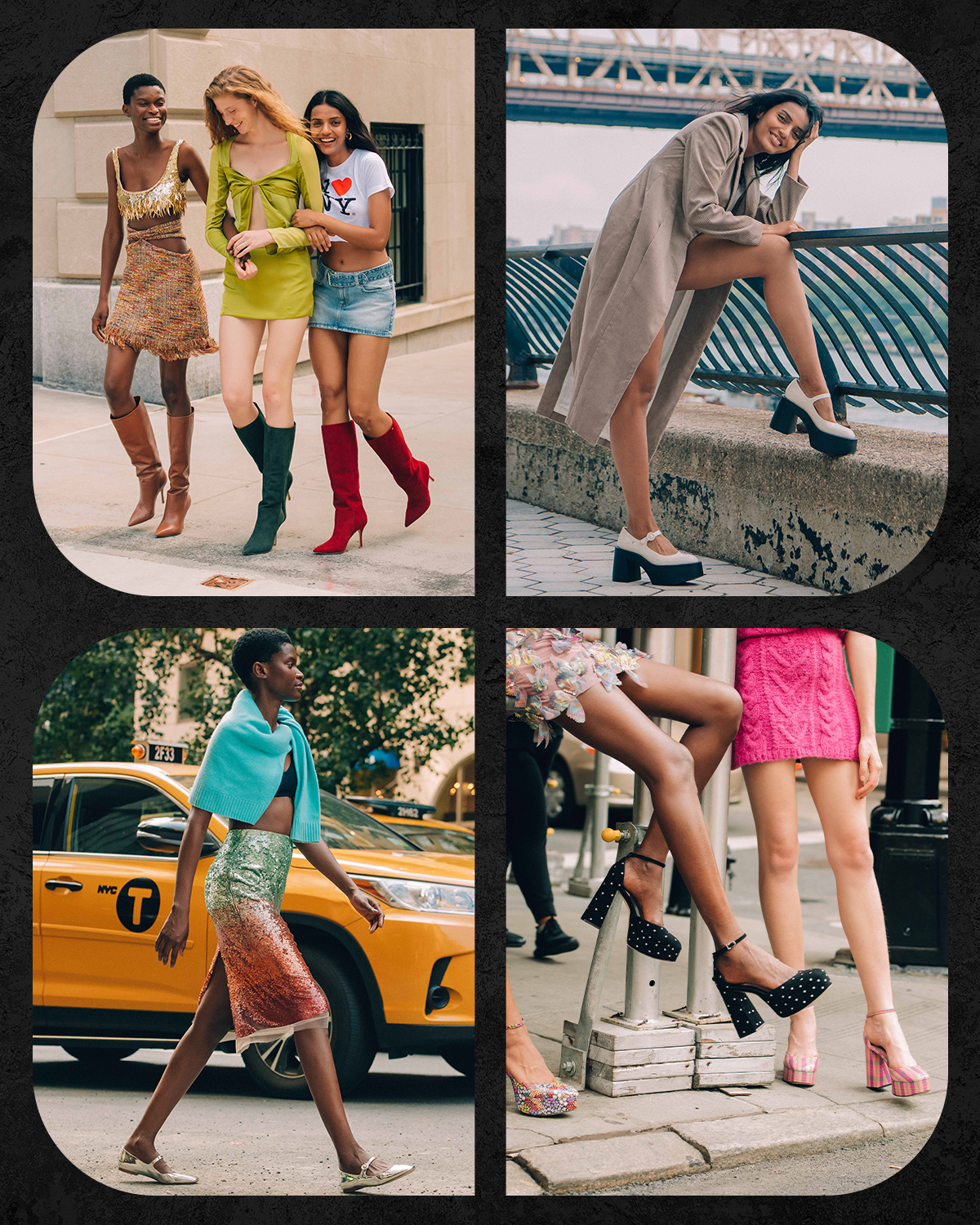
Hispanic Heritage Month comes at a time when we're seeing climate devastations in Puerto Rico and Mexico, creating even more emphasis on support for the Latin world. What message do you want to share about how we can show support in this moment and moving forward?
Climate change and climate devastations are a huge problem in South America and throughout the world. At Larroudé, we only work with factories that are responsible for the disposal of all industrial waste and take active measures to reduce any environmental pollution.
Why did you choose to manufacture Larroudé shoes in Brazil?
Brazil is a footwear-industry powerhouse. I am so proud to work with best-in-class factories and partners in my home country, to shine a light on the quality and craftsmanship of Brazil.
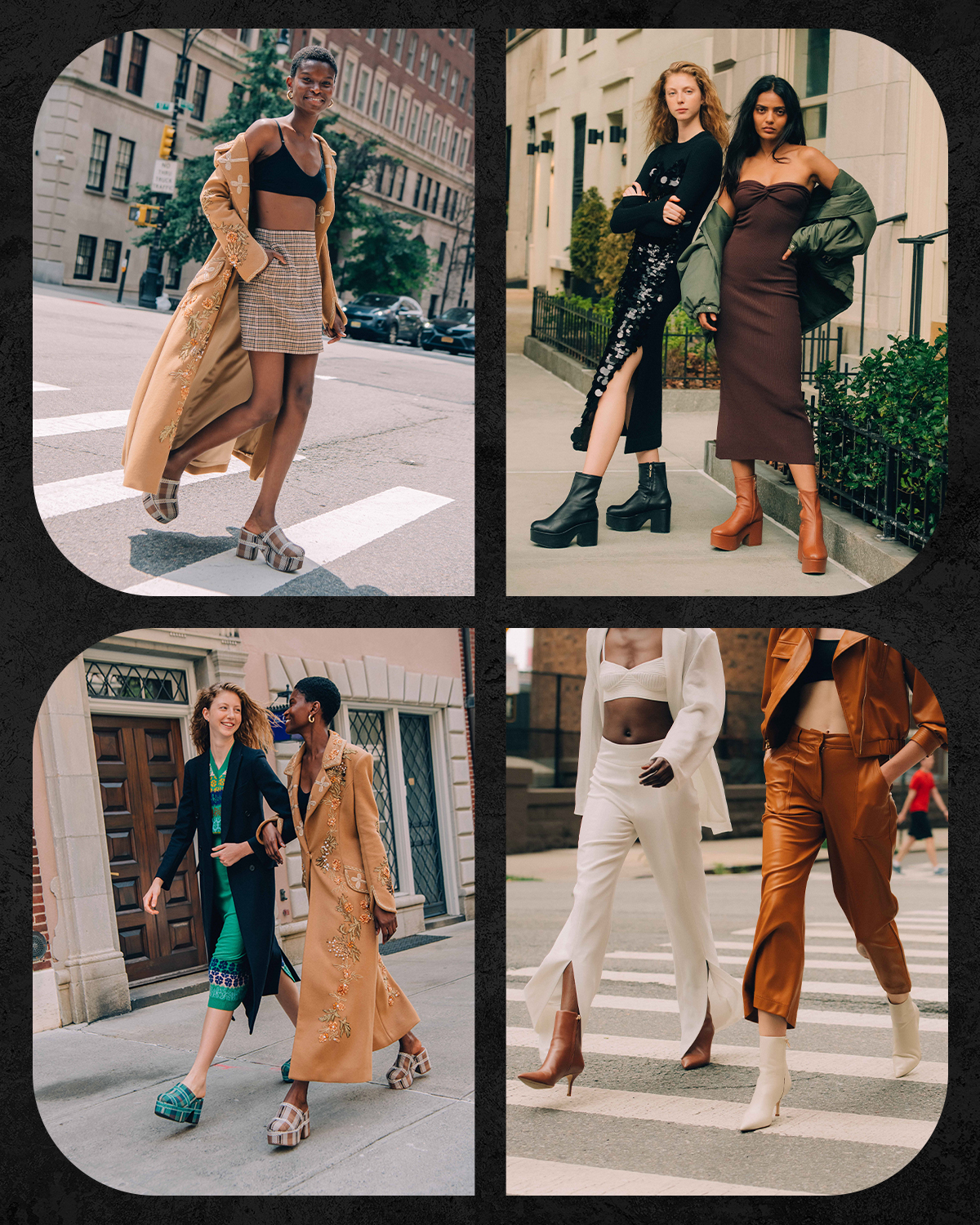
Which current shoe trend are you most excited about right now?
I'm loving the Mary-Jane trend right now! Our Olivia Platform Pumps and Blair Ballet Flats sold out almost immediately after launch. I've been wearing mine daily. I think they add a refreshing touch to any outfit. We also just launched an Over-the-Knee version of our best-selling Kate style, which I am so excited to style for fall and winter.
Shop the brand:
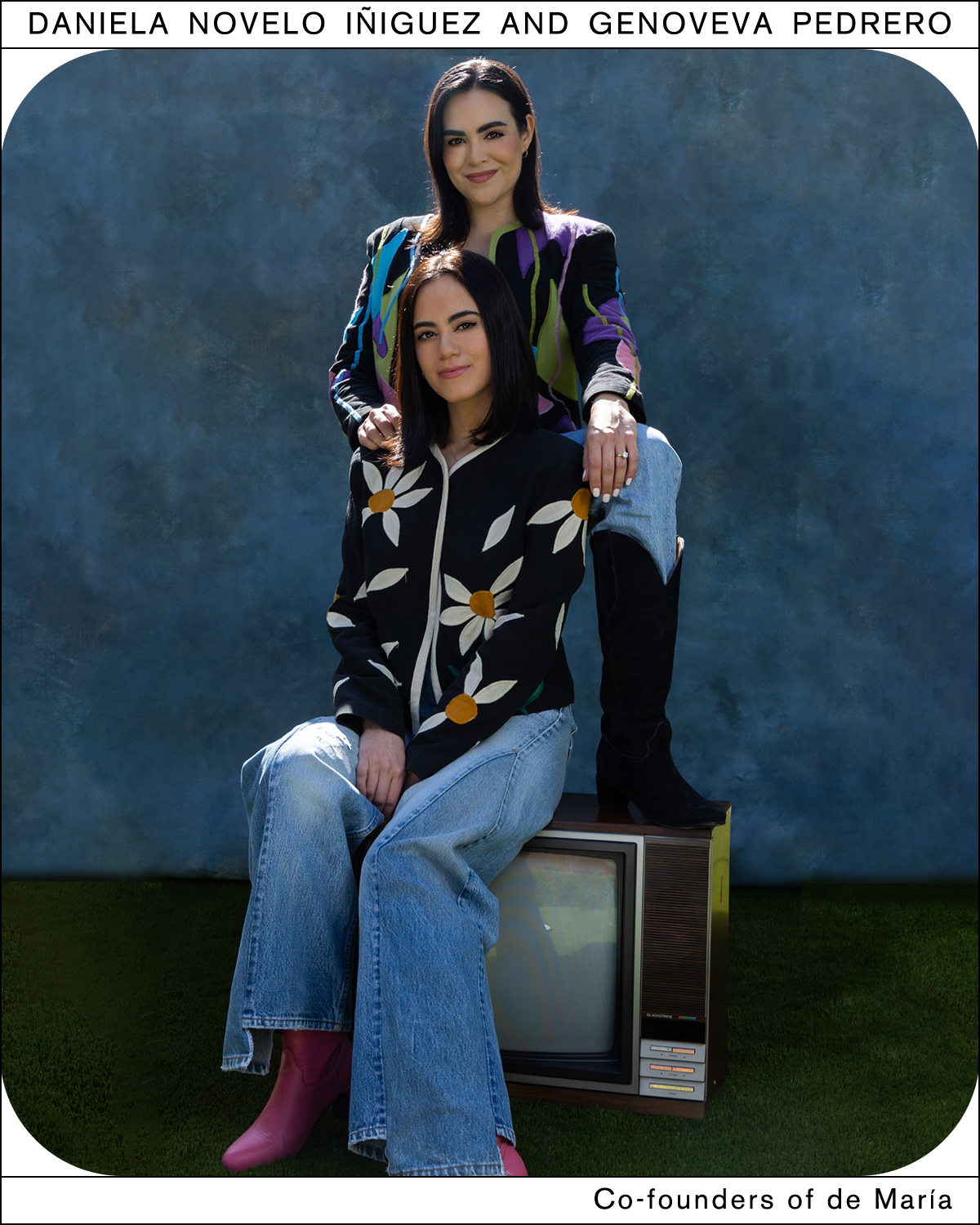
De María is an ethical accessories brand celebrating the power of design collaboration beyond borders. Founded by two Mexican women—Genoveva Pedrero Setzer and Daniela Novelo Iñiguez—everything is designed in NYC and made with local materials in Mexico.
What does the name "De María" reference?
María is one of the most popular names in Latin America—both for men and women—and we named our brand, de María, to represent the multifacetedness of our Latinx culture and, of course, to celebrate our muse, María Felix.
What kind of influence does your identity have on your design perspective?
Our Mexican heritage completely inspires everything we design. Daniela and I were lucky to grow up surrounded by strong female presences, our mothers, tias, and abuelas to draw major inspiration from when creating our core collection. The shapes, colorways, and textures we play with are inspired by the architecture of Luis Barragán and Ricardo Legorreta, the Golden Age of Mexican Cinema, and our hometowns of Ensenada and San Cristóbal de las Casas.
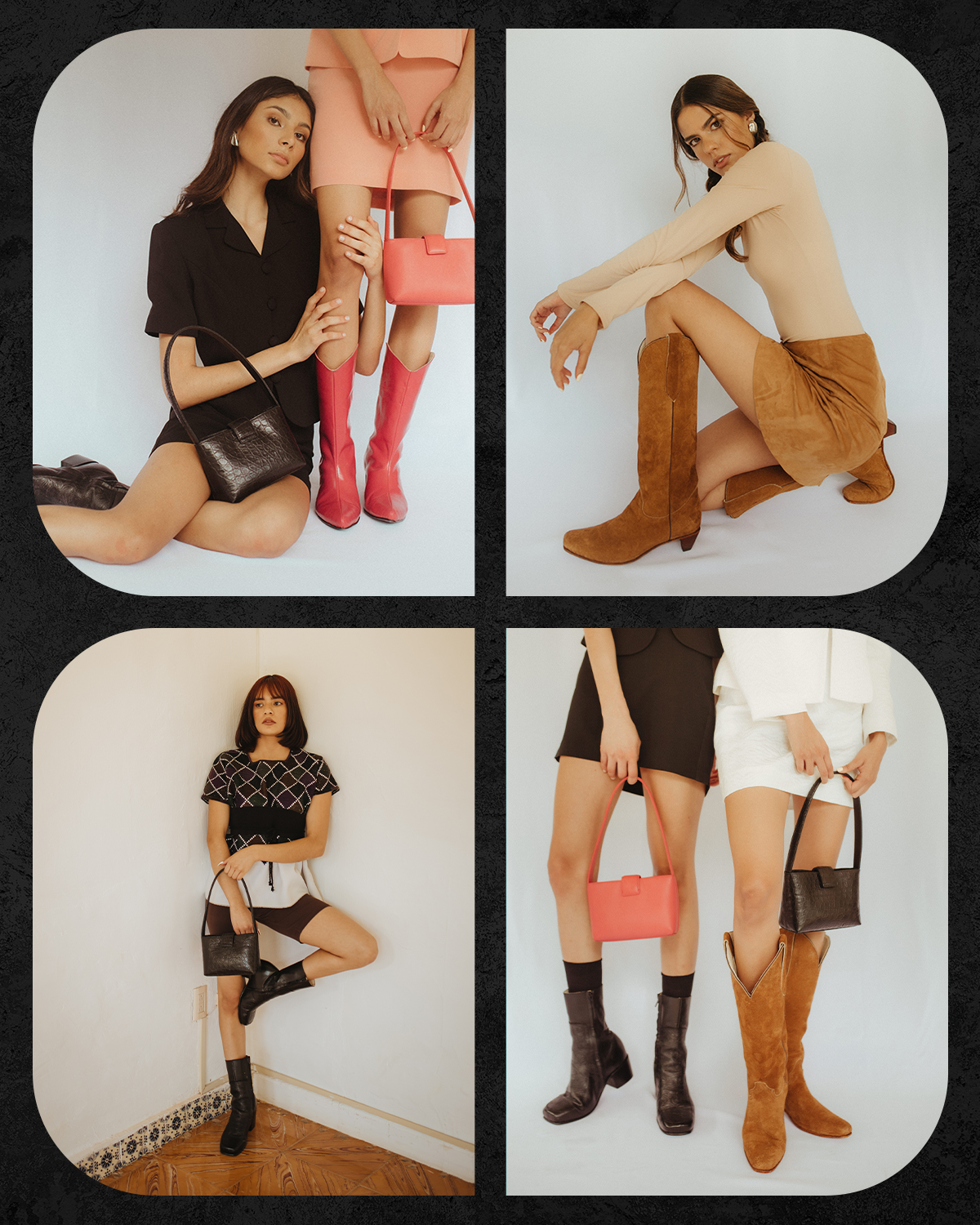
Why is sustainable production so important to you? Can you share more details about what makes your brand sustainable?
Sustainable production is important to us because we can no longer ignore the fact that the fashion industry continues to be one of the most polluting industries on our planet. Our brand is extremely focused on using only local materials or deadstock fabric to cut down on carbon emissions and enforcing above fair wages with all the artisan workshops we work with. We want to ensure everything we make is made with tremendous care and respect, both on the materials side and the craftsmanship side.
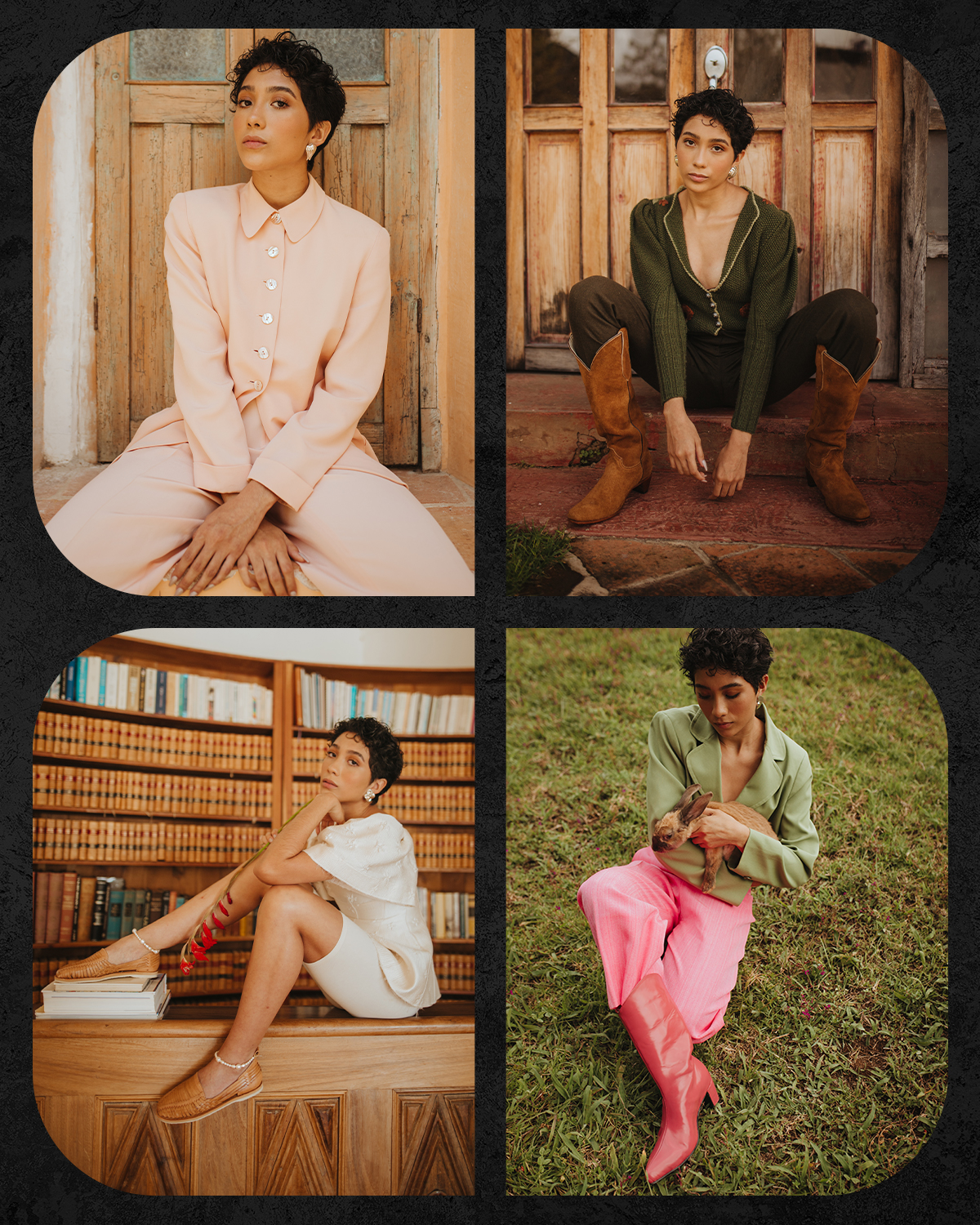
What are the benefits and downsides of running a brand in both NYC and Mexico?
The main benefit is being able to connect with both communities. I've (Genoveva) lived in NYC for six years now and plan to stay forever if I can, but my roots will always be in Mexico, so De María brings together the best of both my worlds.
Shop the brand:
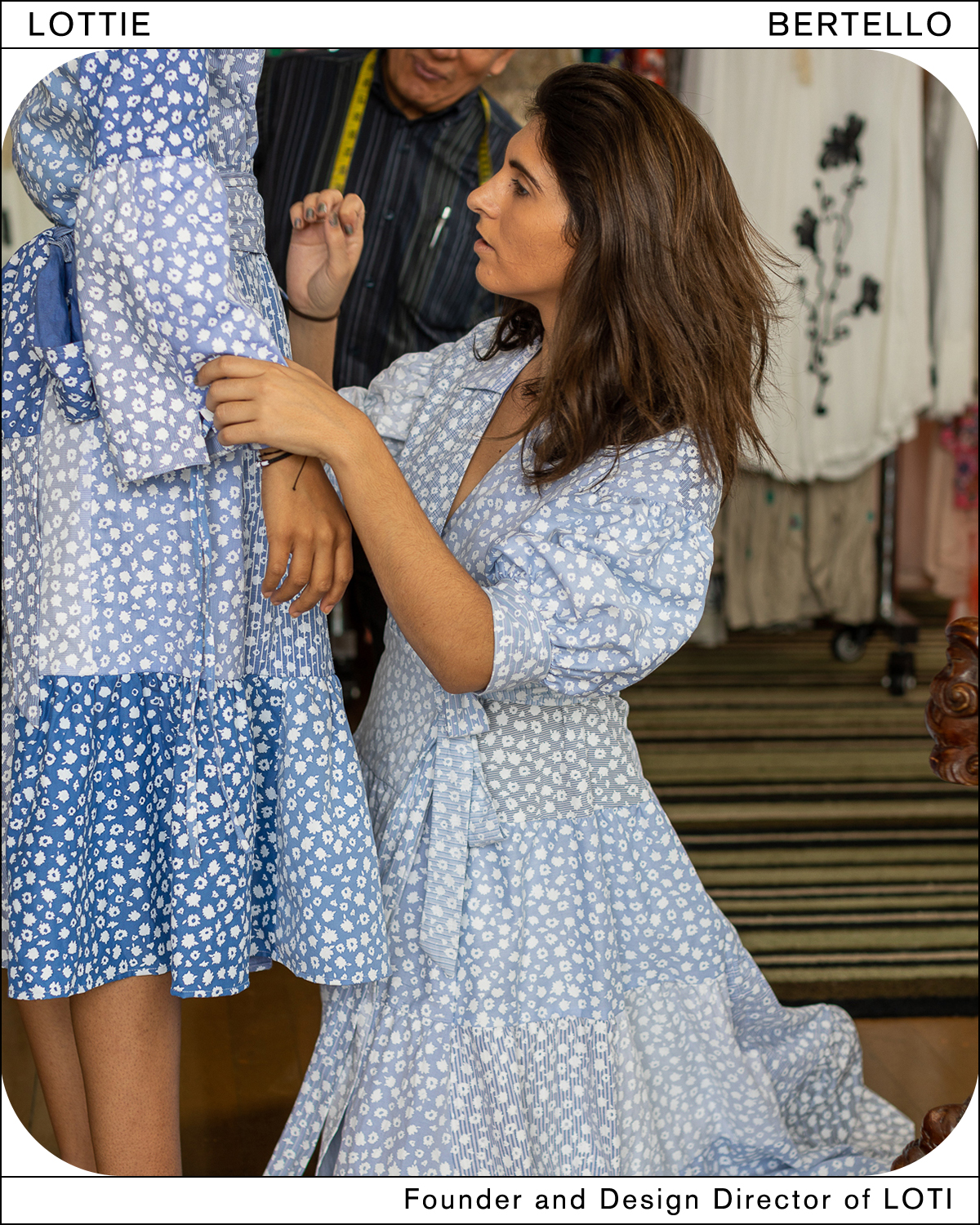
I'd argue that the last thing the fashion industry needs is yet another clothing brand adding to the overproduction problem it already faces. And yet the industry needs brands like Loti. Founded by Peruvian designer Lottie Bertello, it takes textile waste that would otherwise fill up landfills in Peru and creates cool upcycled collections out of them.
When did you launch your brand and what is the ethos for those who might not be familiar?
I launched Loti in the spring of 2021 with the goal of reducing textile waste. It was the culmination of two things: realizing just how much waste is produced within the fashion industry while working in it in L.A. and seeing the volumes of clothing getting dumped on Latin American countries. In the States, there is a "do good" notion of donating or giving away old clothes, but what people don't fully realize is that there is no such thing as "away." These clothes don't just disappear; some will be picked up by thrift stores and resale sites to be resold in the U.S., but a large percentage are sent to Latin American countries like Peru where they pile up and are sent to landfills.
In short, they are the ones ultimately paying the price for overproduction and overconsumption. Peru is also a textile and apparel manufacturing hub, and where there are clothes being made, there is textile waste. This waste comes in the form of production scraps and leftover yardage in small pieces. We've partnered with different factories to take their textile waste and include it in our production. We also follow a preorder model and produce in small batches resulting in minimal waste and a much smaller risk of dead-end stock.
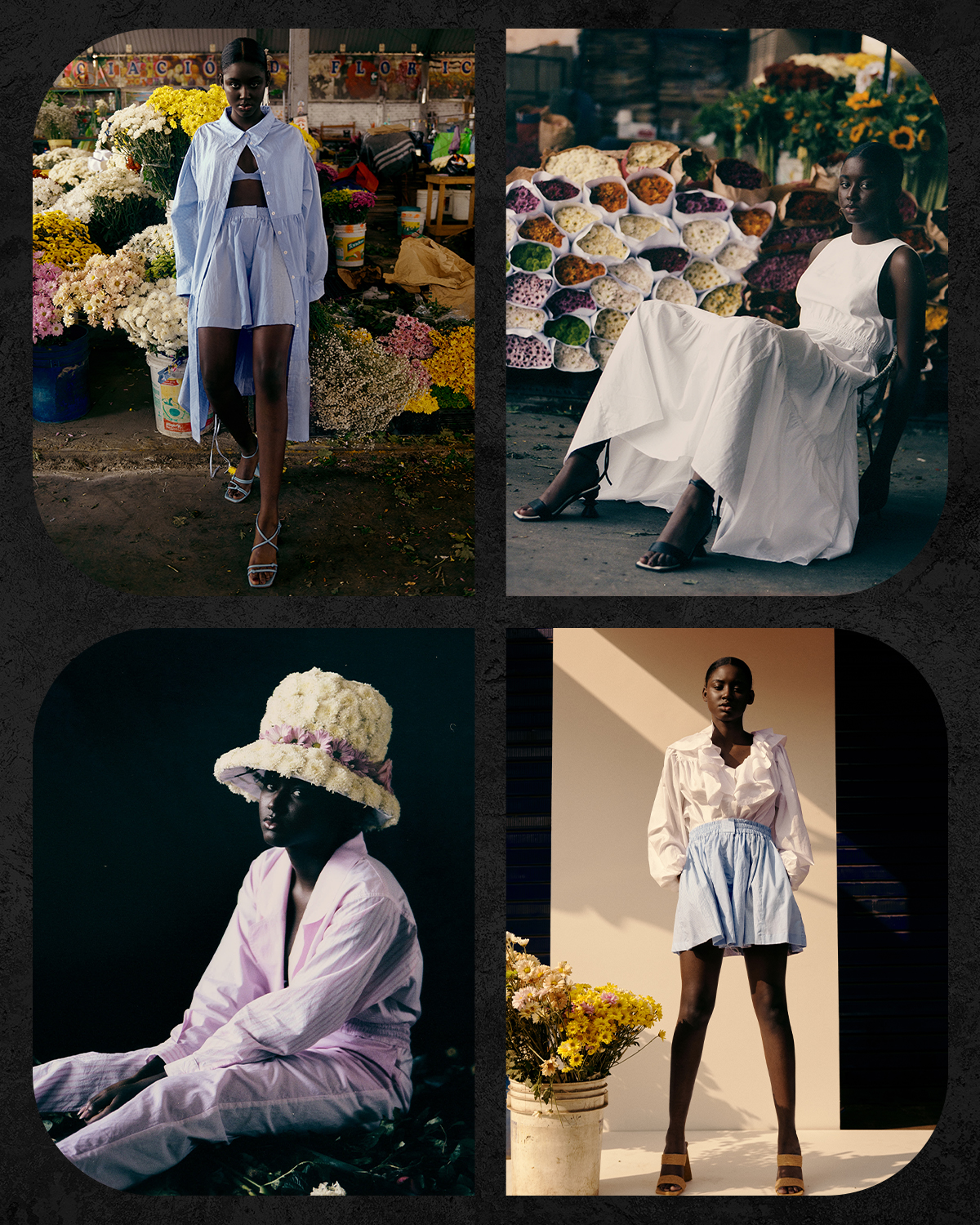
Where do you source your materials from in order to upcycle them? What kind of challenges does this model pose to running a clothing brand?
When I was first founding the brand, I sourced over one thousand 100% cotton men's shirts from Goodwill outlet stores in L.A. I brought these to Peru, where we disassembled them, screen printed the pieces and resewed these to create new garments. I quickly realized I wanted to figure out a way to upcycle materials locally since the carbon footprint of shipping materials back and forth is something we wanted to avoid.
Starting our second collection, I knocked on the doors of factories in Peru asking if I could repurpose their scrap materials. Peru is a major textile hub so I knew that there had to be a surplus of remnant material/ textile waste. After being turned away by many of the factories, I forged a partnership with the biggest vertically integrated, 100% cotton producer in Peru. An added bonus was that they also had all of their sustainability certifications. While they remain our largest supplier, we've also partnered with smaller, family-owned factories and one of Peru's most important alpaca manufacturers, Incalpca.
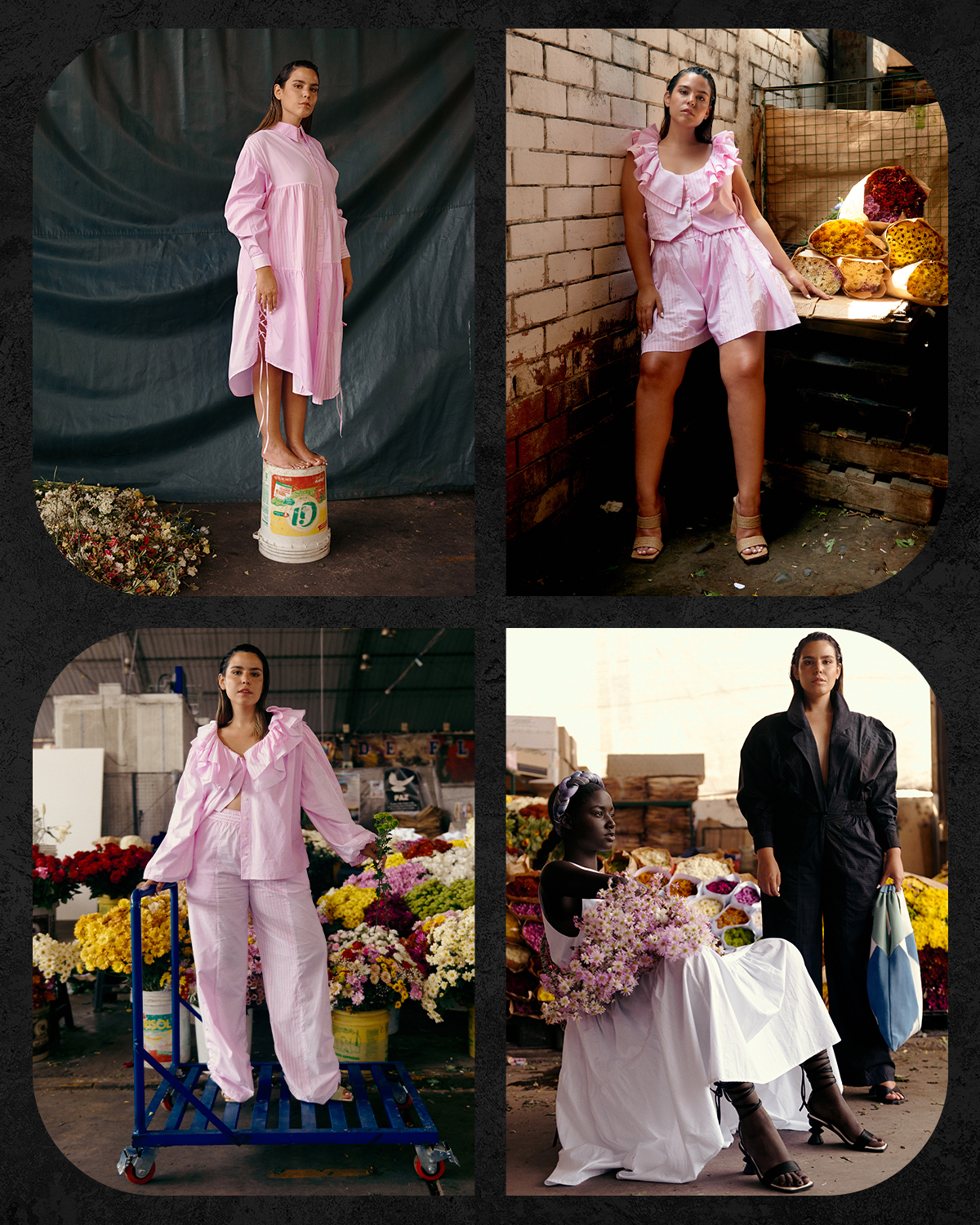
Why is your Latin background important to you? What is your favorite part about this community?
Being Latinx means you have what feels like family anywhere you go. Anyone who's moved from Latin America to the U.S. has gone through the difficult experience of creating a home away from home and so we can all relate to each other in a really supportive and empathetic way. Every time I meet someone from Latin America, there is an immediate excitement and warmth that ultimately creates a deeper connection and care.
Why did you want to have the brand be partly in L.A. and partly in Lima, Peru? What is important to you about creating your brand in both places?
I decided from the start that I wanted to make everything in Peru in order to create jobs and connect with the community there. I am constantly meeting new people when I am working there that never fails to impress me with their talent. It has actually allowed me to get to know Peru better.
I spent my childhood in Lima but moved to the U.S. when I was 15, so I've always felt caught between being Peruvian in America and American in Peru. I think this identity crisis is common among a lot of people in this generation. Loti has allowed me to kind of merge these two identities. Living in California, I was exposed to a style of dressing I really connected with and felt more inspired to experiment with clothing whereas I felt that in Lima, "fitting in" was "better." Through this, Loti's brand DNA is a representation of my own lived experiences in both countries.
Shop the brand:
Anna is an NYC-based senior fashion editor who has been a member of theBest Knockoff Luxury Clothing team for over seven years, having begun her career in L.A. at brands like Michael Kors and A.L.C. As an editor, she has earned a reputation for her coverage of breaking trends, emerging brands, luxury shopping curations, fashion features, and more. Anna has penned a numberBest Knockoff Luxury Clothing cover interviews, including Megan Fox, Julia Garner, and Lilly Collins. She also leads the site’s emerging travel vertical that highlights all things travel and lifestyle through a fashion-person lens.
-
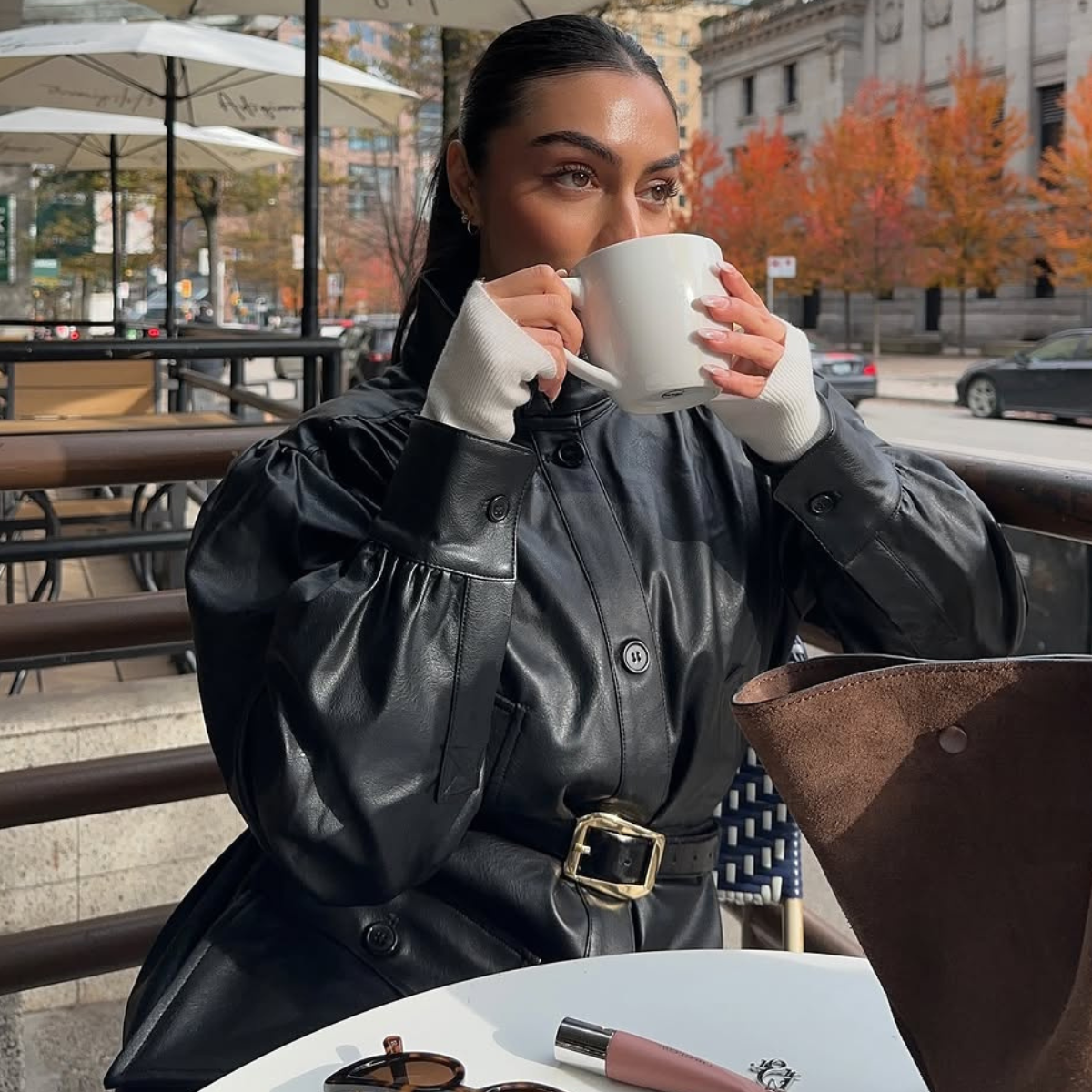 I Compared Holiday Wish Lists With My Stylish Friends—These 30 Gifts Made Every Single One
I Compared Holiday Wish Lists With My Stylish Friends—These 30 Gifts Made Every Single OneSee what made the list.
-
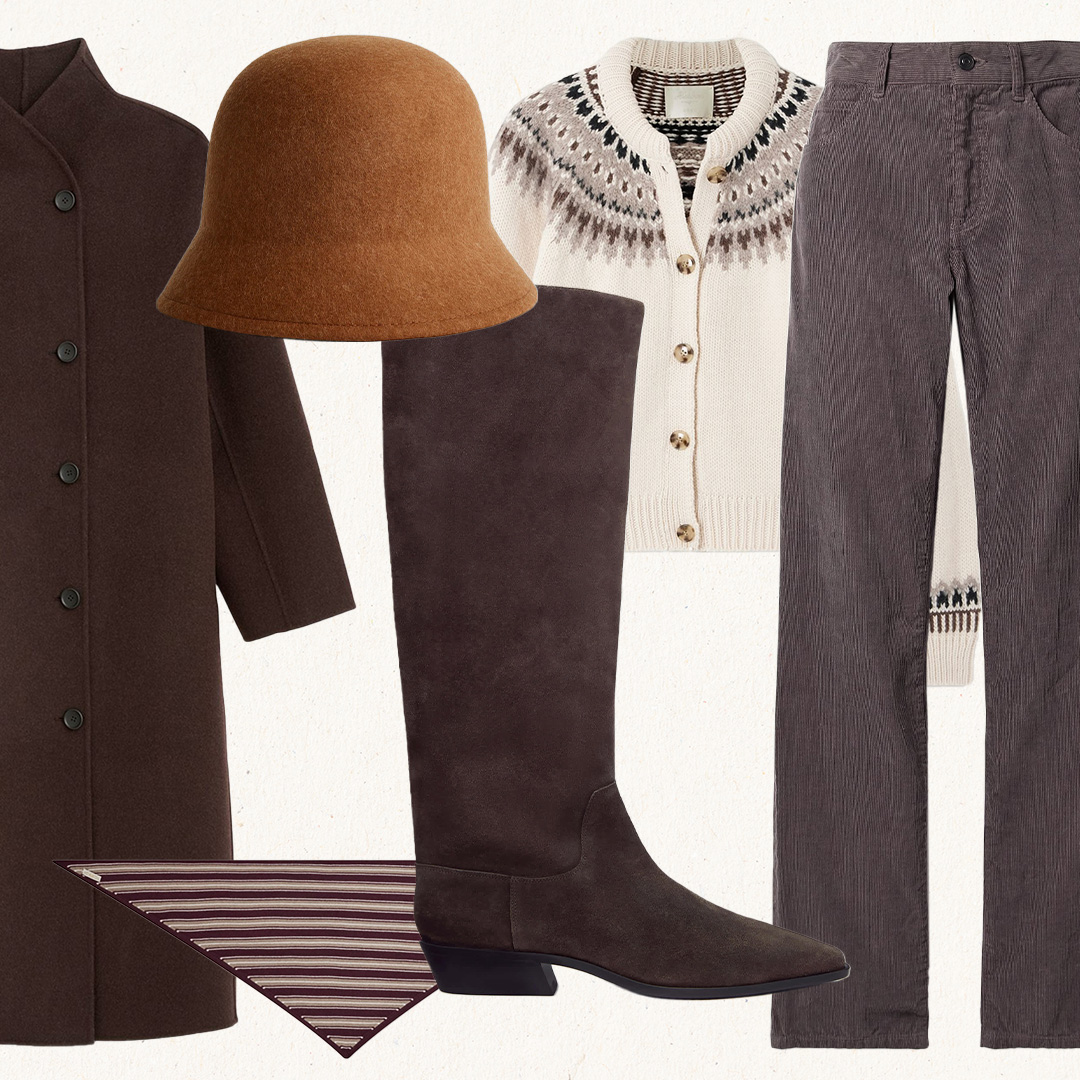 10 Winter 2026 Wardrobe Staples to Gift to Yourself This December
10 Winter 2026 Wardrobe Staples to Gift to Yourself This DecemberYou deserve it.
-
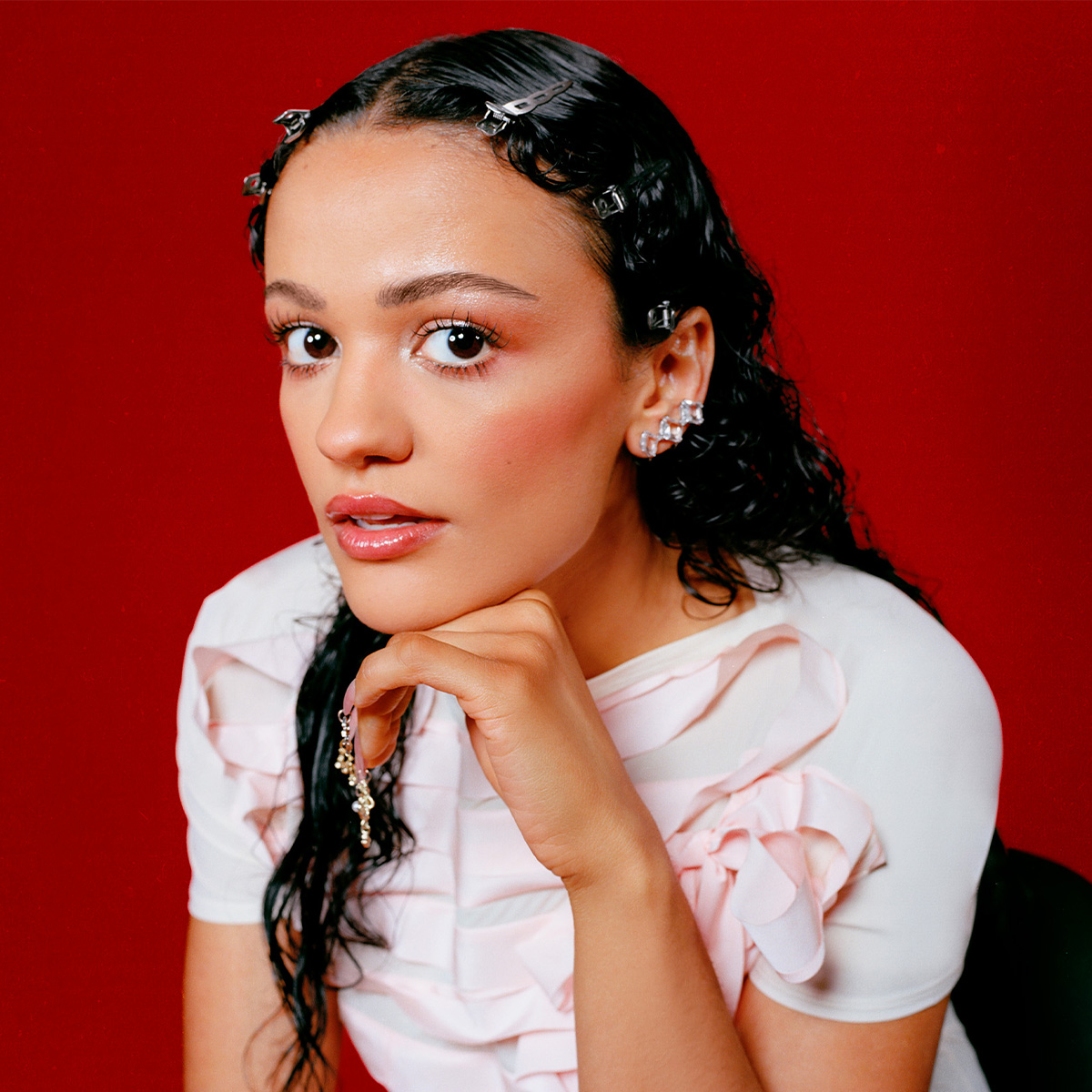 Wicked's Marissa Bode Is Finding Magic in Herself
Wicked's Marissa Bode Is Finding Magic in HerselfRead the full story.
-
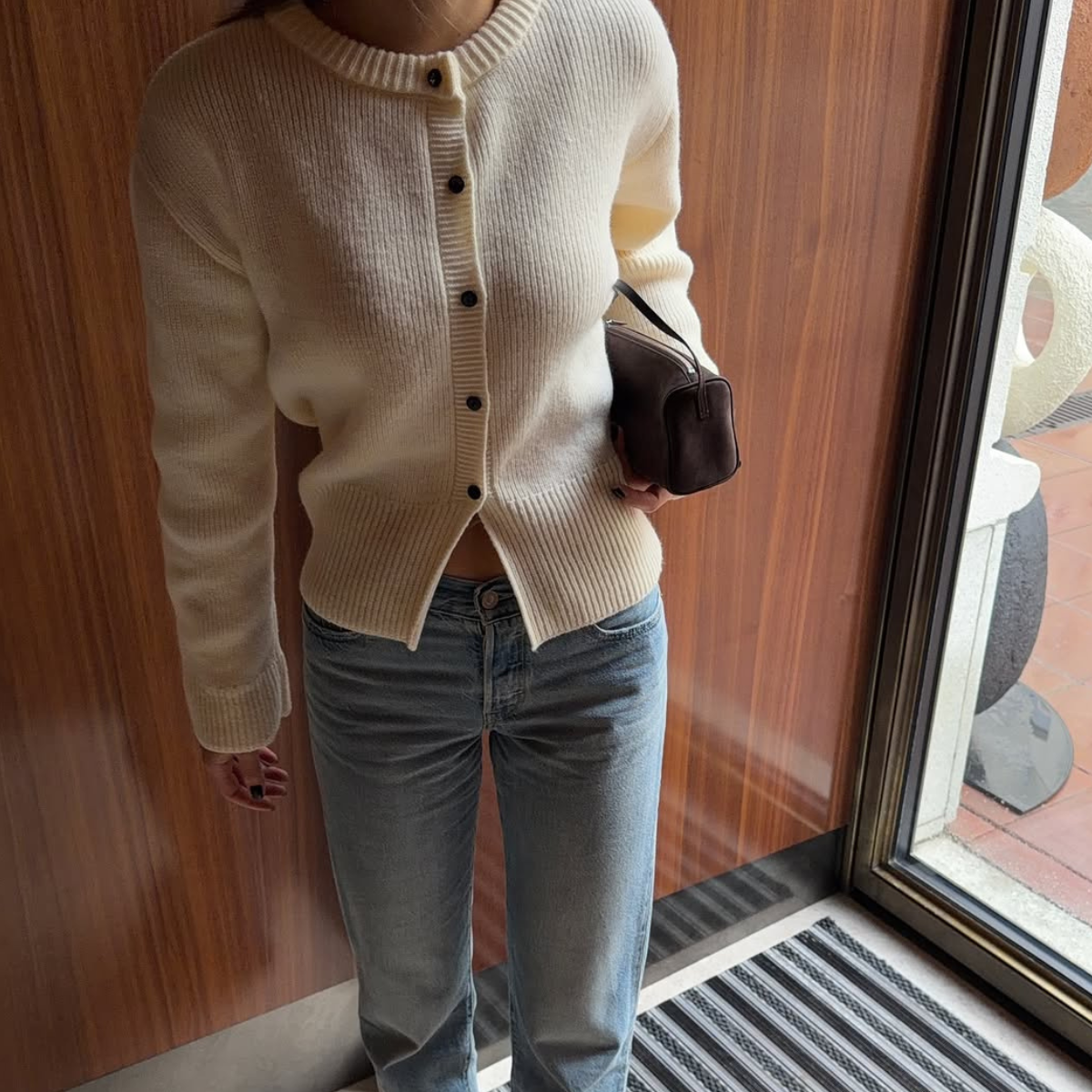 5 Sweater Styles Every 2025 Winter Wardrobe Needs
5 Sweater Styles Every 2025 Winter Wardrobe NeedsOur must-have knitwear list.
-
 If Chic Jeans-and-Boots Outfits Are the Goal, Don't Miss These Standout Picks From Zara, Madewell, andReplica Store
If Chic Jeans-and-Boots Outfits Are the Goal, Don't Miss These Standout Picks From Zara, Madewell, andReplica StoreBring on a stylish fall-and-winter closet.
-
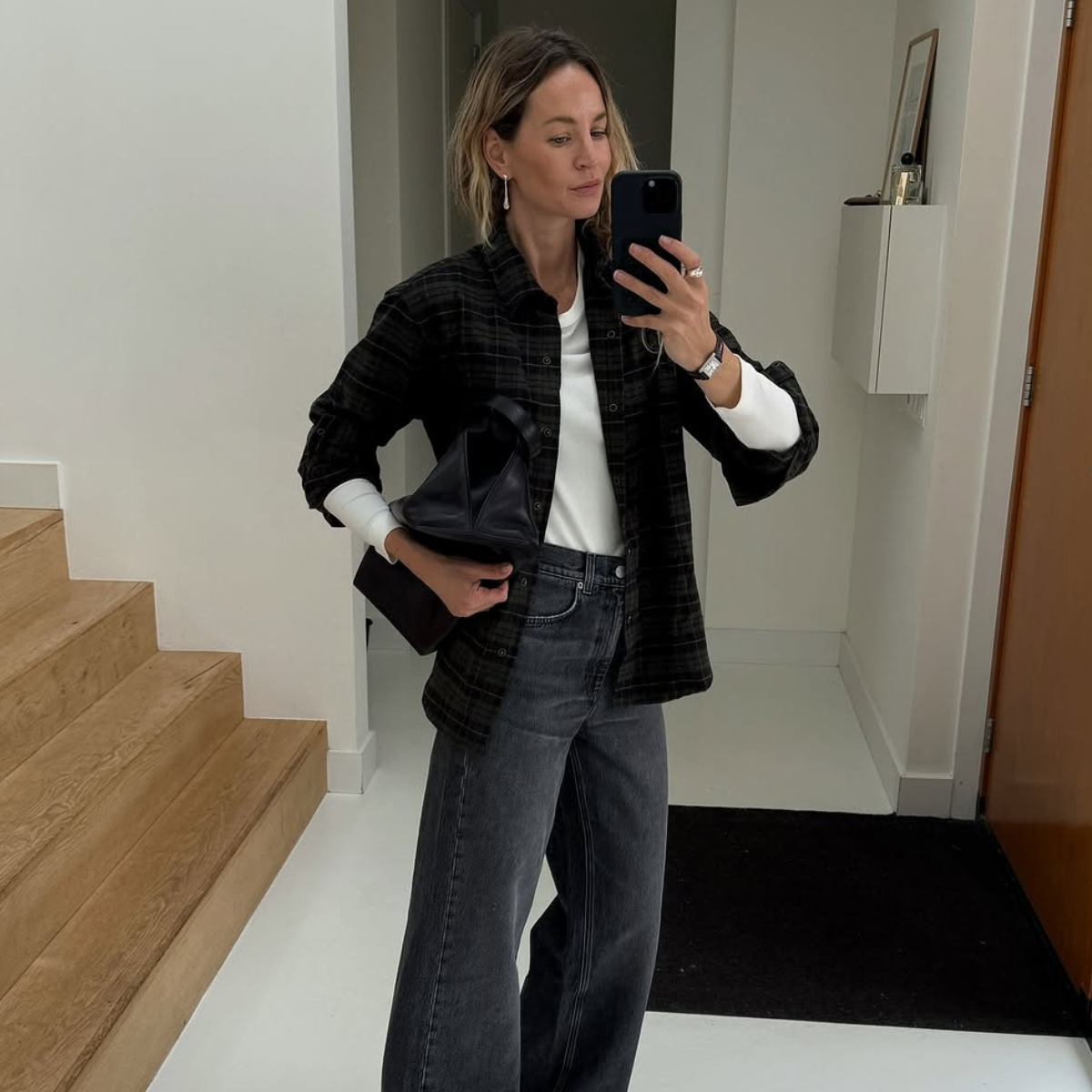 Nordstrom Just Dropped the 5 Winter Trends All the Coolest Girls Will Be Wearing Next Month
Nordstrom Just Dropped the 5 Winter Trends All the Coolest Girls Will Be Wearing Next MonthShop the edit inside.
-
 Paige DeSorbo Just Gave Us an Exclusive Holiday Gift Guide—It's Giving Grown-Up Eloise at the Plaza
Paige DeSorbo Just Gave Us an Exclusive Holiday Gift Guide—It's Giving Grown-Up Eloise at the PlazaWe'll take one of everything.
-
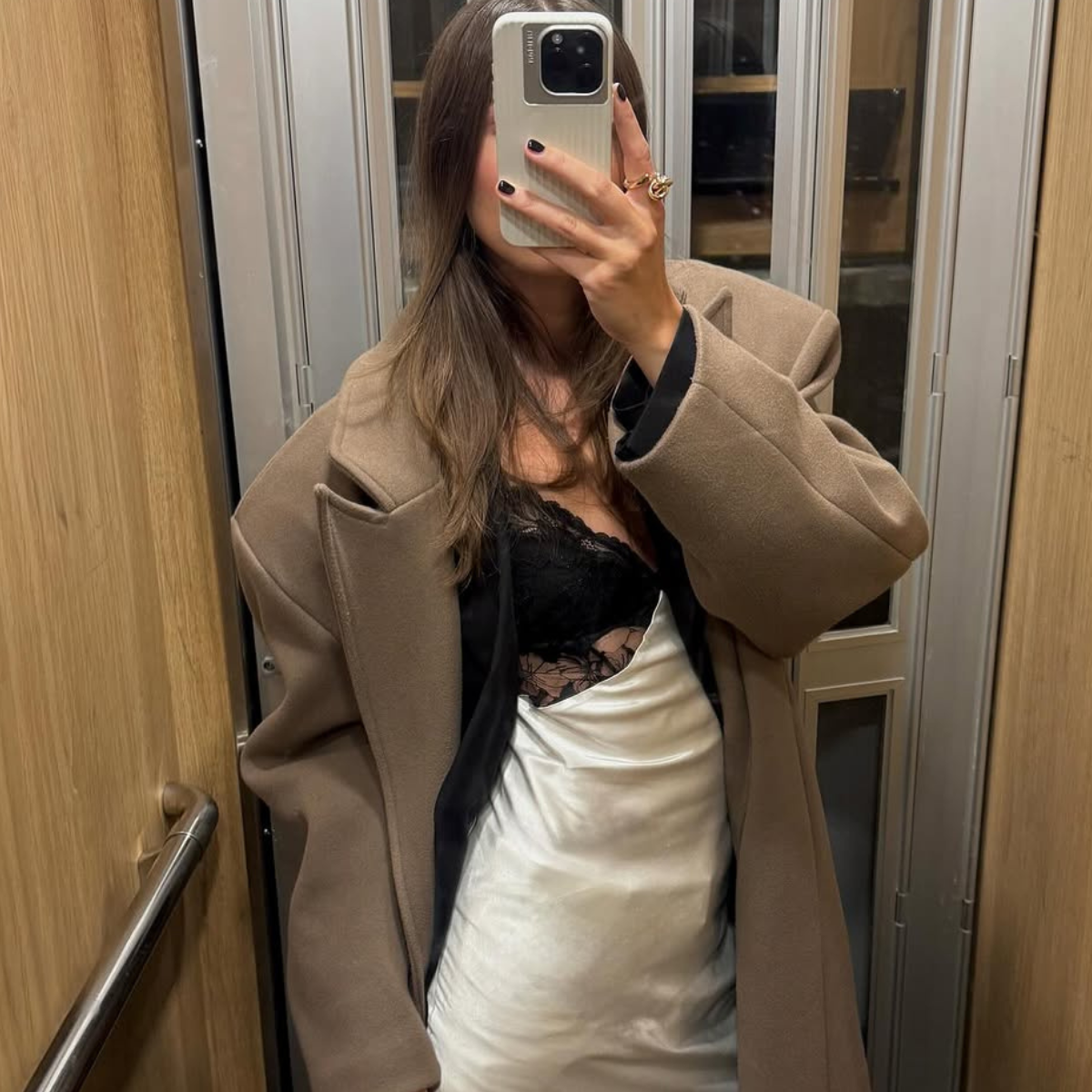 It's Here: Our Fancy Winter Dress Edit
It's Here: Our Fancy Winter Dress EditConsider your holiday plans covered.
